Category: Architecture
1
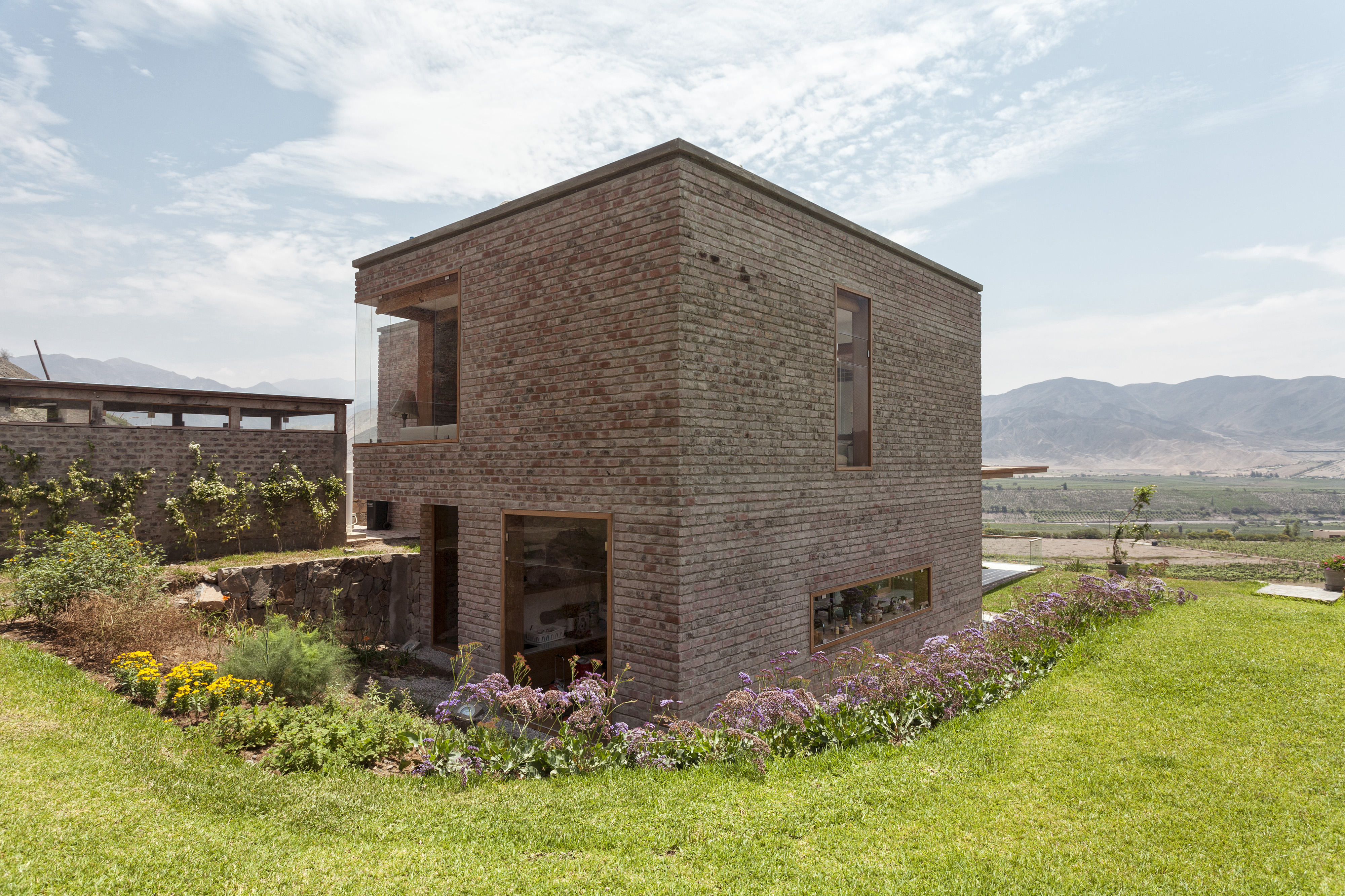
Casa de campo en Azpitia diseñada por Rafael Freyre
House in Azpitia
The house is located in Azpitia valley, in the coast of Lima, Peru.
Approximately 90 Km south of the city of Lima and 20 km away from the seashore. A place known by the local vineyards and its pre-columbian ruins; a kind of natural oasis for people escaping from the big metropolis of Lima.
The landscape is characterized by the dryness of the desert that contrasts with green areas along the course of the river Mala from the mountains towards the Pacific Ocean. A valley consisting of small mountains and picks rising up from the desert on both sides of the river, changing colors from beige to light brown, to reddish, anthracite and soft grey.The house sits on a slope, at the foot of the mountain with a view to the path of the river Mala towards the sea, facing the vineyards.
The project was intended to integrate the house with such dry landscape and to develop a geometry and a palette of textures and colors according to this environment. Furthermore, the project should be seen as a new layer on the landscape above the old existing ones: the pre-columbian sites and textiles and ceramics remains. An image of different time layers all together.
For such purpose we decided to use different materials layers, specially working with local handcrafted materials and techniques, merged with other industrial ones.
Twenty kilometers away from Azpitia, at the Chilca shore, we still found traditional local handcrafted brick ovens. The bricks, made of clay and sand have thermal properties, an irregular texture and particular colors that relate to this dry landscape.
The foundation of the house is composed of platforms -made from local stone- covered with xerophyte plants hiding the internal program of the Sauna.
Above the stone layer is located the terraces: an extension of the social area -kitchen, dining room and living room- covered with a wood roof that protects form sun radiation. The roof is a kind of textile grid that allows light entrance. The grid is composed from a wood pattern developed according to the sun path, avoiding direct radiation. The roof, as an architectural elementary, creates a transitional space -shadow, semi-shade and open areas- projecting the interior life towards the outdoor space. All the first level of the house, comprising the social areas, is an open space surrounded by gardens and views. The second level contains the private areas: the main and secondary room, both framing special views of the valley.
LOCATION VALLE DE MALA – LIMA
MATERIAL LADRILLO ARTESANAL
AREA 170 M2
YEAR 2014
STATUS DESIGNED AND BUILT
ARCHITECTURE
ESTUDIO RAFAEL FREYRE
GENERAL ASSISTANCE
ARQ. JUAN JOSE BARBOZA
CIVIL WORK
INGEGRAMA
WOODWORK
LUIS MUCHA
METAL STRUCTURES
LEONARDO VALDERRAMA
GLASSWORK
LUIS BACON
LANDSCAPING ADVICE
MANUEL MENDIETA
PHOTOGRAPHY
EDUARDO HIROSE
PHOTOGRAPHY ASSISTANCE
MARÍ RETAMOZO
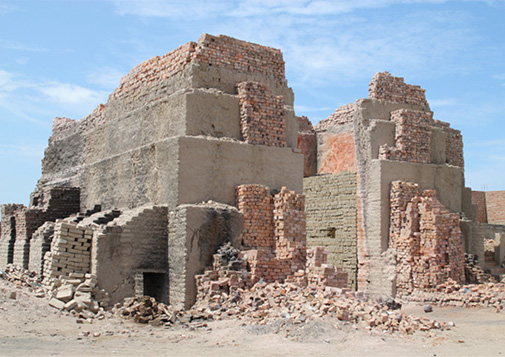
Casa de Azpitia en construcción

Work in progress. Boceto de Casa en Azpitia. Azpitia house sketch.

El concepto arquitectónico buscó integrar la casa con el valle de Azpitia. The architectural concept seek to integrate the house with Azpitia valley.
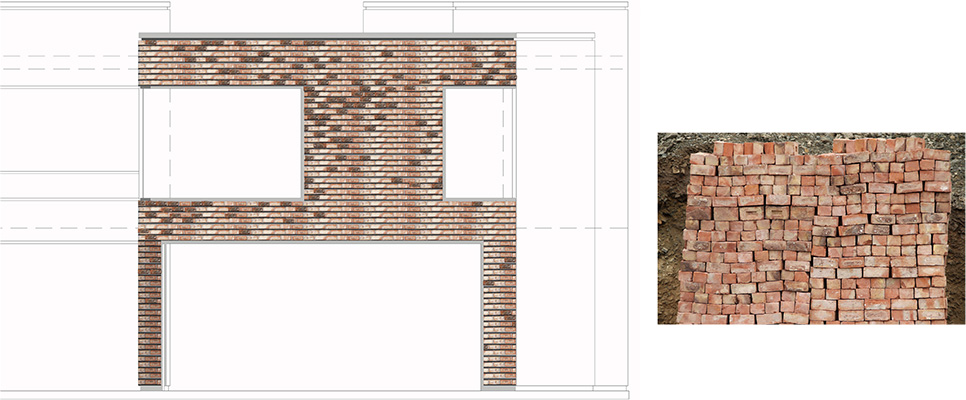
Los ladrillos de arcilla y arena tienen propiedades térmicas, una textura irregular y colores particulares que se relacionan con el paisaje seco donde está ubicada la casa.The bricks, made of clay and sand have thermal properties, an irregular texture and particular colors that relate to the house dry landscape.
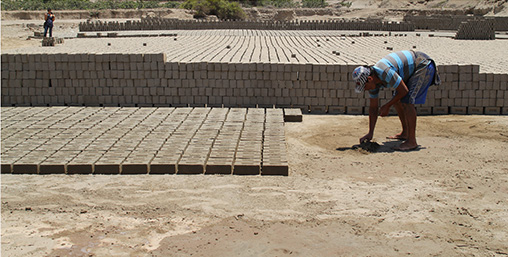
Los ladrillos de la casa fueron fabricados en hornos por artesanos que trabajan en talleres cerca a la zona. The house's bricks were manufactured in kilns by artisans who work in workshops near the area.
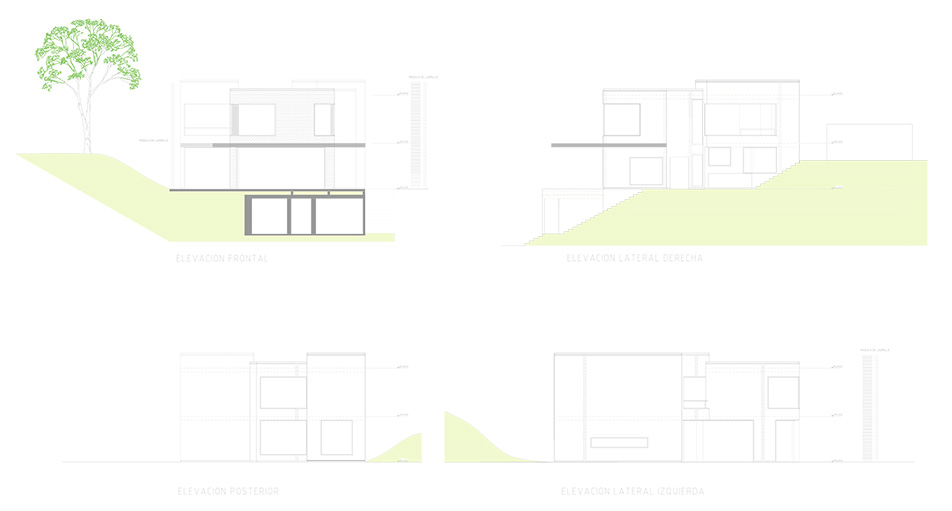
Arquitectura y paisajismo. Planos de Casa en Azpitia. Architecture and landscaping. Azpitia house building design.
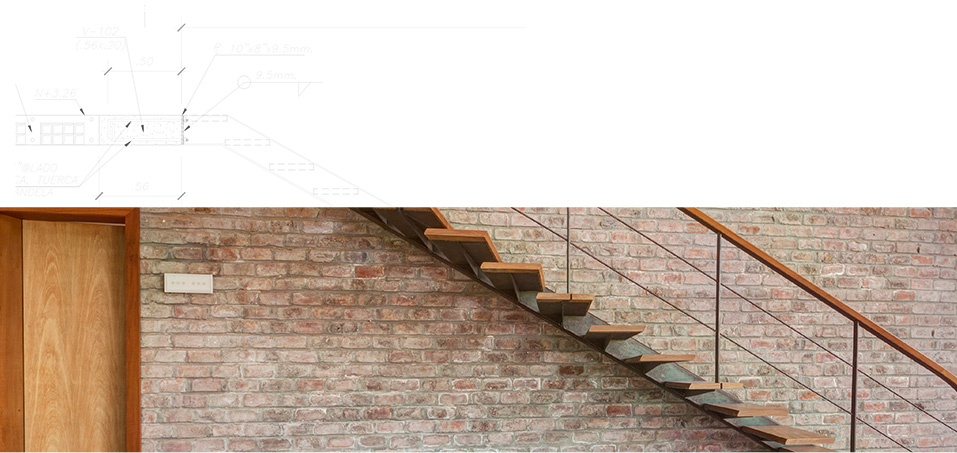
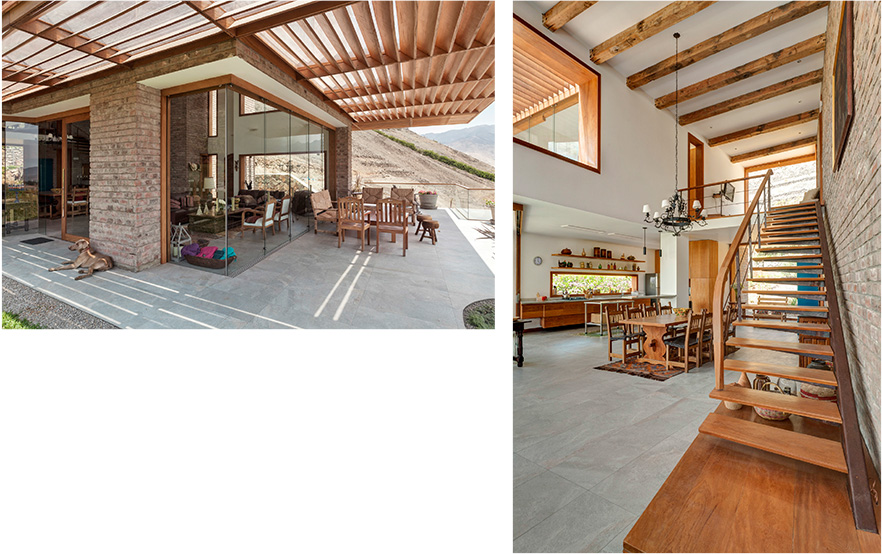
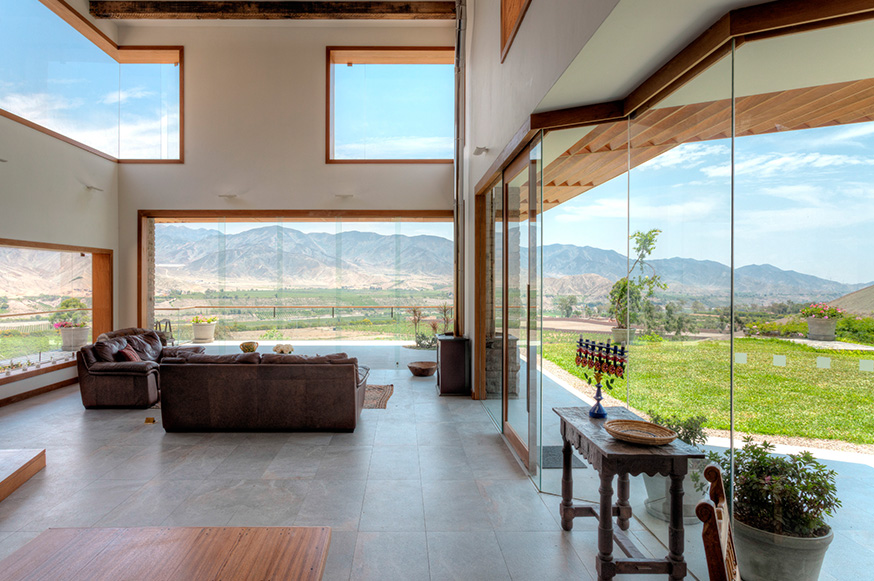
El concepto arquitectónico de la casa busca fundir los espacios interiores y exteriores. The architectural concept of the house seeks to merge interior and exterior spaces.

Cocina con vista al valle de Azpitia. Kitchen facing Azpitia valley view.
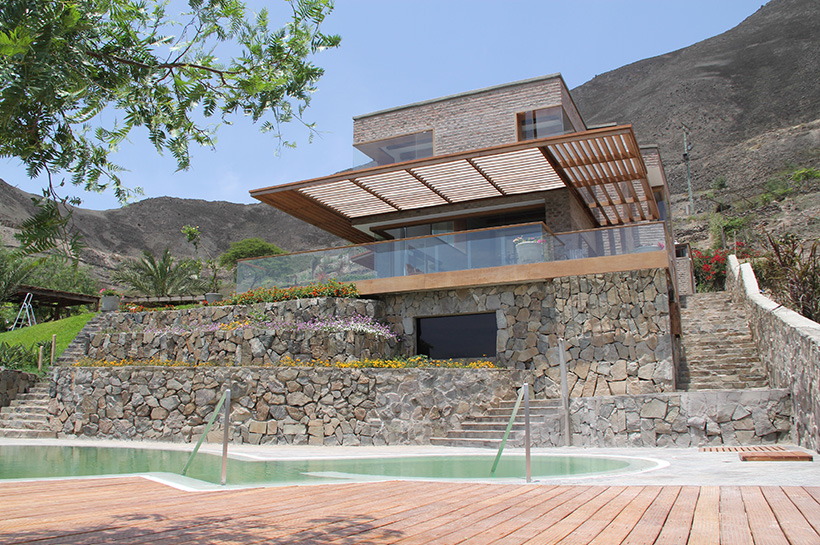
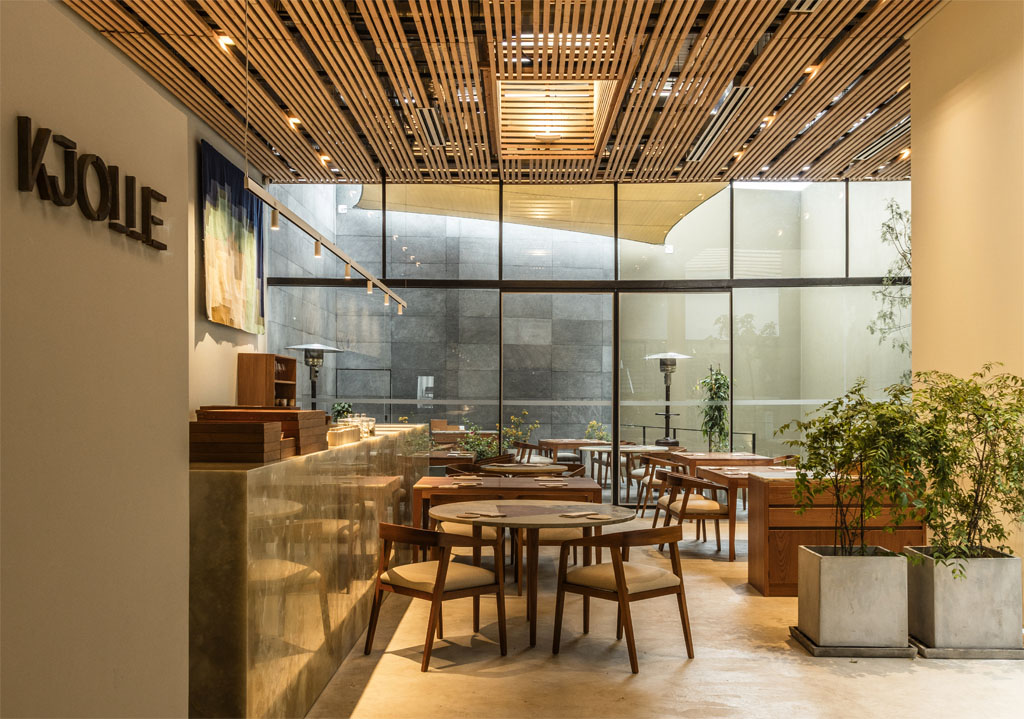
Kjolle
It is located in the same building that houses Central Restaurante, in the traditional district of Barranco on the Limean coast. Like all the project’s spaces, Kjolle’s architectural concept emerges from the relationship between landscaping and architecture. Its identity, however, is far from being a mere extension of Central.
Kjolle’s architecture stems from a search for simplicity and fluidity, as this is a restaurant that nourishes off Peruvian biodiversity without adhering to the order of its ecosystems.
The use of soft colors and textures was essential to the project: while minerals are predominant in Central – volcanic rock for the floors, clay and Amazonian wood for its panels – warmth predominates in Kjolle – pine wood for the false ceiling, and the delicate cream tone of its Ayacuchan onyx bar.
Natural elements and unique, artisanally crafted pieces bring warmth to the space, thus a textile piece was created in collaboration with artist Ana Barboza and artisan Elvia Paucar. Moreover, the restaurant is illuminated by natural light that is filtered through a patio coated in volcanic rock and two inner gardens.
ARCHITECTURE AND DESIGN
ESTUDIO RAFAEL FREYRE
DESIGN FINISHES TEAM
ARCH SOLANGE JACOBS
DIS YULIANA SANTAMARIA
ARCHITECTONIC DESIGN TEAM
ARCH JUAN JOSE BARBOZA
ARCH ANDRÉS GUZMÁN
ASSISTANCE IN PRODUCTION OF STONE FINISHES
ARCH JAVIER RUBIO
TECHNICAL TEAM
WOOD SPECIALIST
LUIS ALBERTO MUCHA
STONE SPECIALIST
ROBERTO ROMÁN
CLAY SPECIALIST
ERICK MALASQUEZ
WEAVE ARTISAN
ELVIA PAUCAR
TEXTILE ARTIST
ANA TERESA BARBOZA
LANDSCAPING ASSISTANCE
ALVARO ESPEJO
OVERALL MANAGEMENT OF THE PROJECT
ARQ MARÍ RETAMOZO
LIGHTING
HIGHLIGHT
CIVIL WORK MANUFACTURER
BGS INGENIEROS SAC
BUILD
JORGE ROMERO
ELECTRICAL AND MECHANICAL INSTALLATIONS
JULIO CÉSAR RAFFO
SANITATION FACILITIES
JOSÉ UBALDO
METAL AND WOOD CARPENTRY
MATRANSA
SOUND
LIMA SOUND
PHOTOGRAPHY
JUAN PABLO MURRUGARA
EDUARDO HIROSE
MUSUK NOLTE
GUSTAVO VIVANCO
TEXT TRANSLATION
NICOLÁS DEL CASTILLO
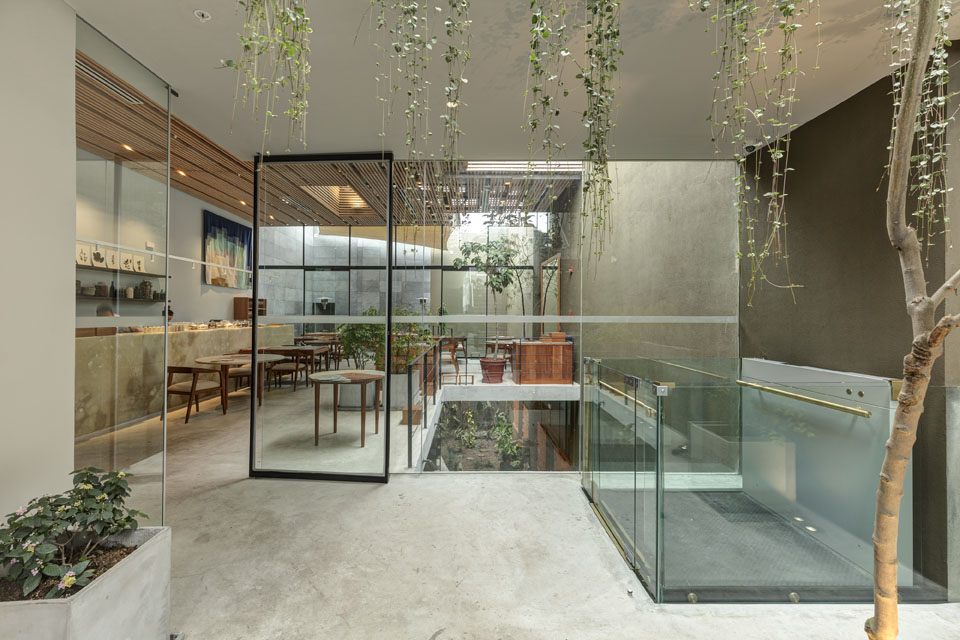
Entrada de restaurante Kjolle en Lima.
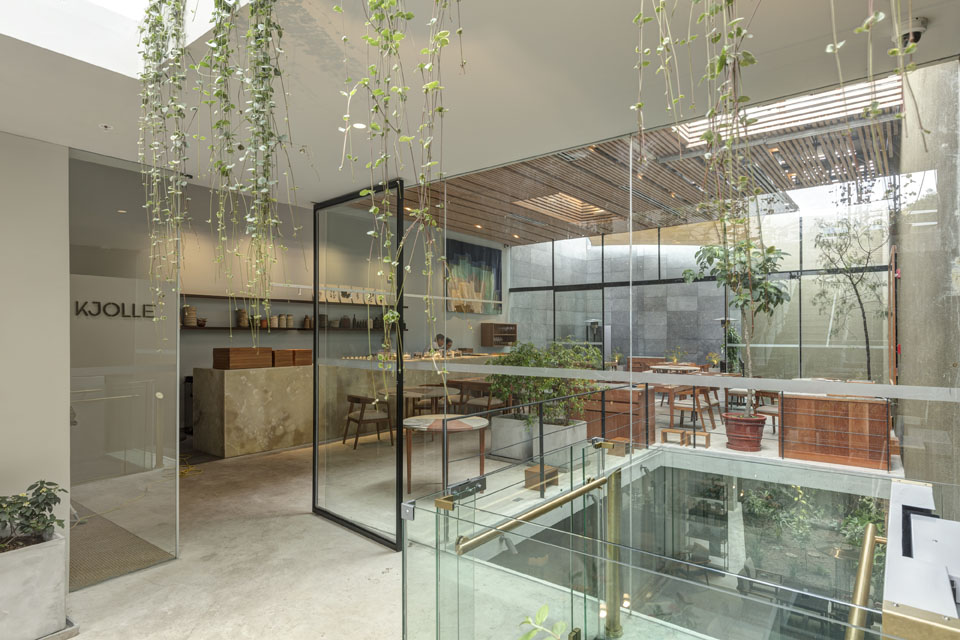
Entrada a Kjolle, restaurante de la chef peruana Pía León. Entrance to Kjolle, the restaurant of Peruvian chef Pía León.
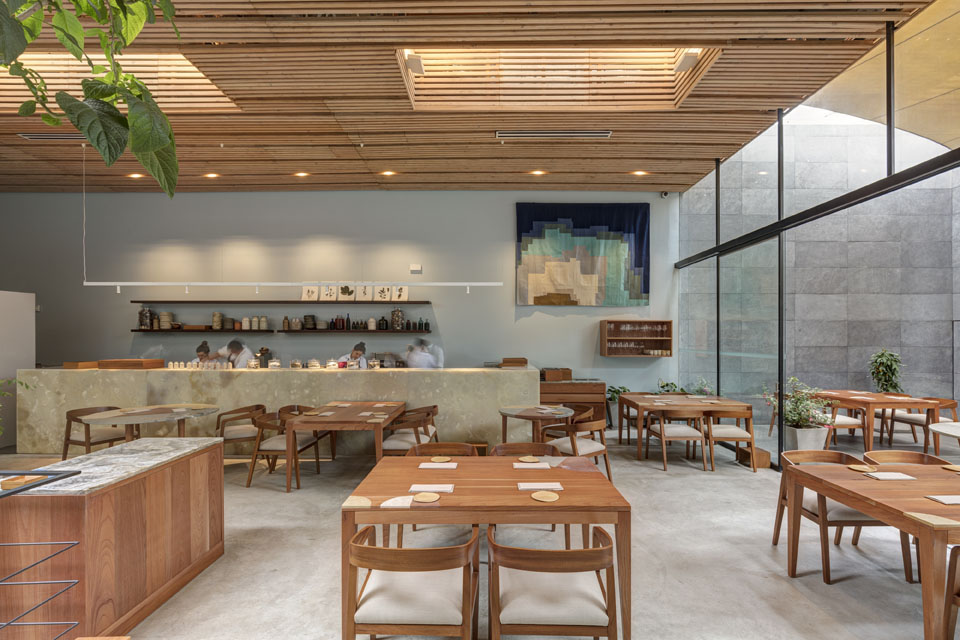
El diseño interior de Kjolle incluye una pieza textil elaborada por las artistas Ana Teresa Barboza y Elvia Paucar. Kjolle's interior design includes a textile piece made by artists Ana Teresa Barboza and Elvia Paucar.
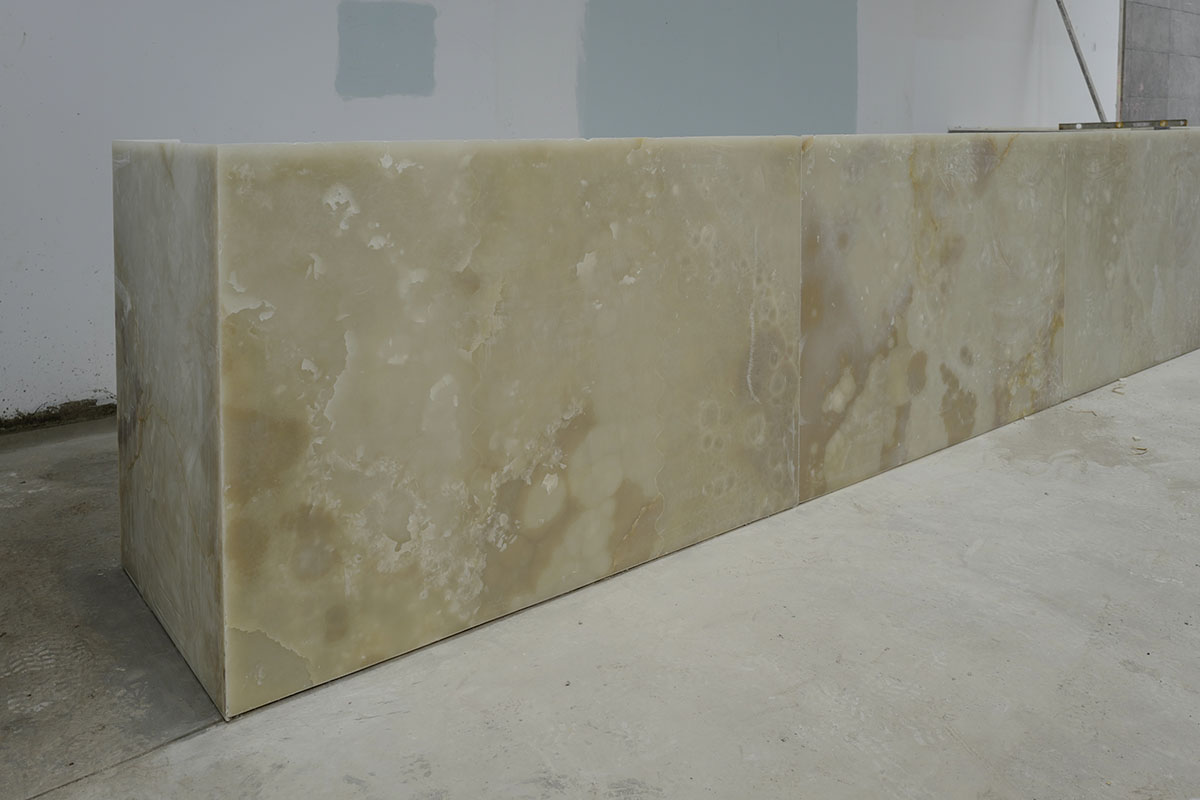
Diseño Interior Peruano. Barra de ónix de Ayacucho. Peruvian Interior Design. Bar made of onyx from Ayacucho.
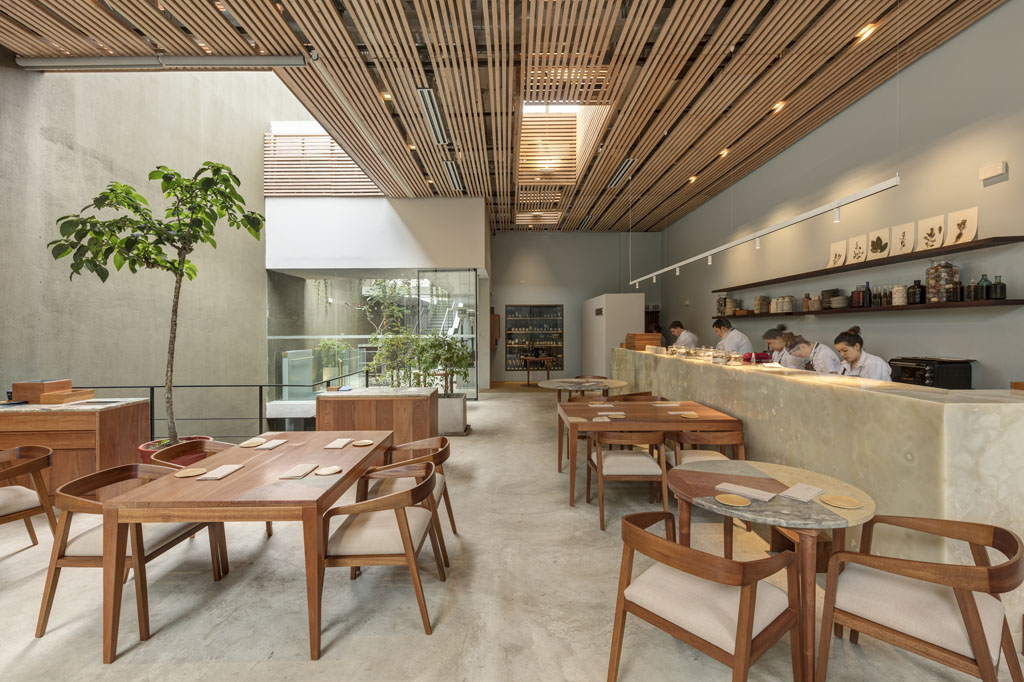
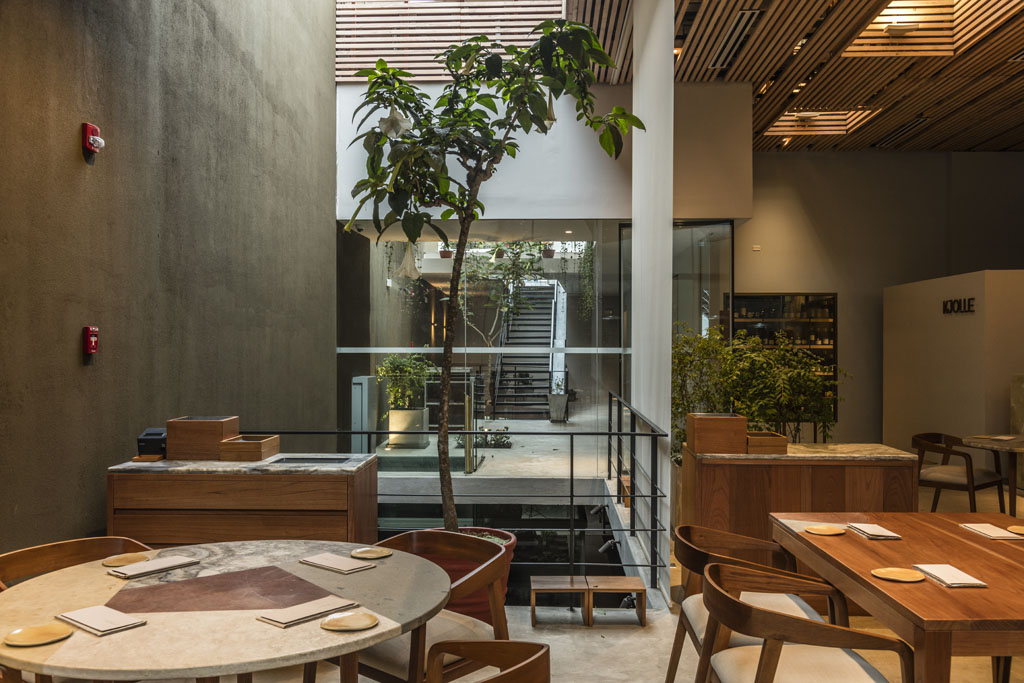
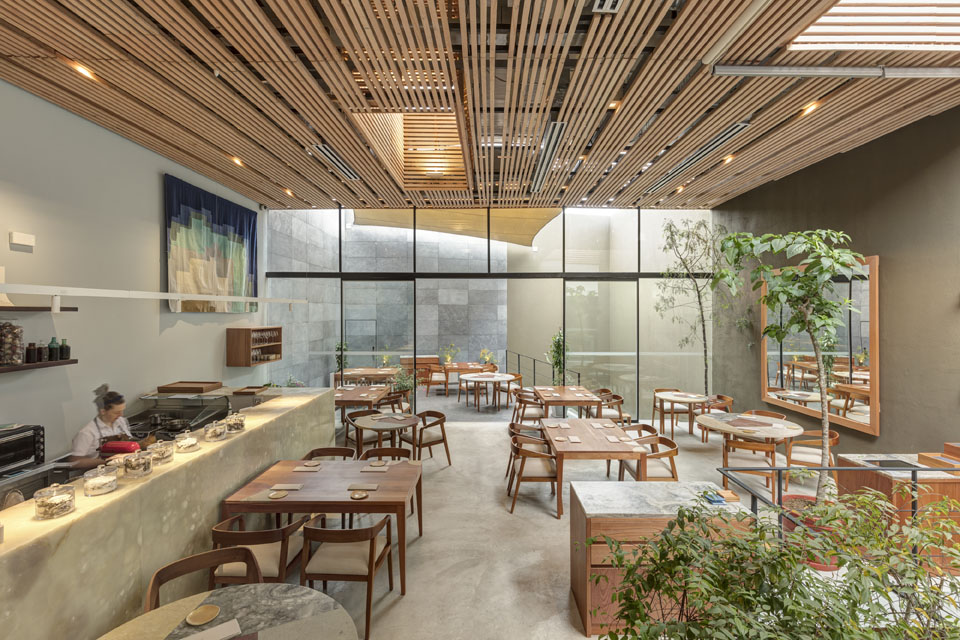
La iluminación de Kjolle proviene del patio revestido de piedra volcánica y dos jardines interiores. the restaurant is illuminated by natural light that is filtered through a patio coated in volcanic rock and two inner gardens.
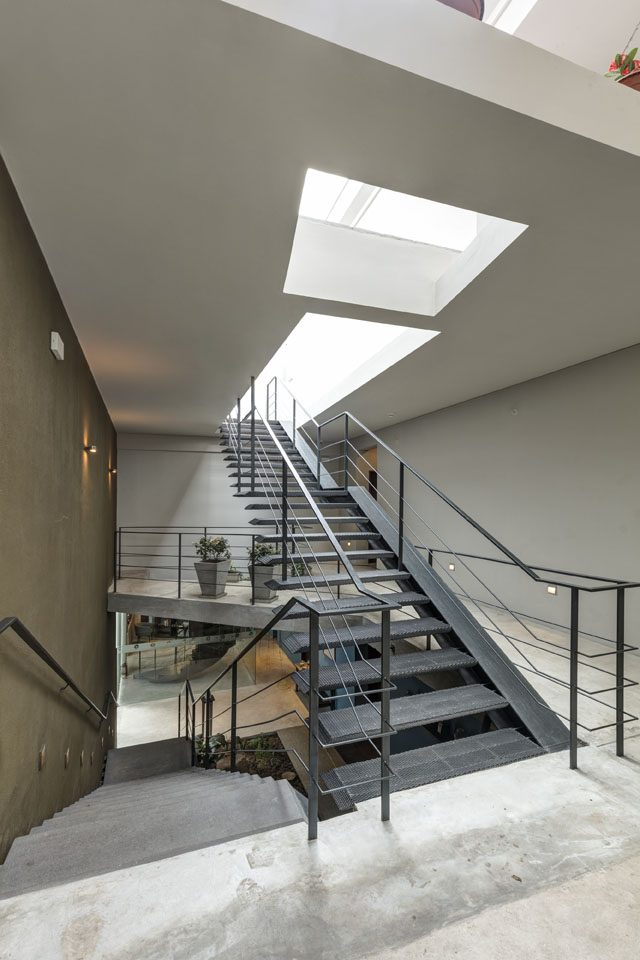
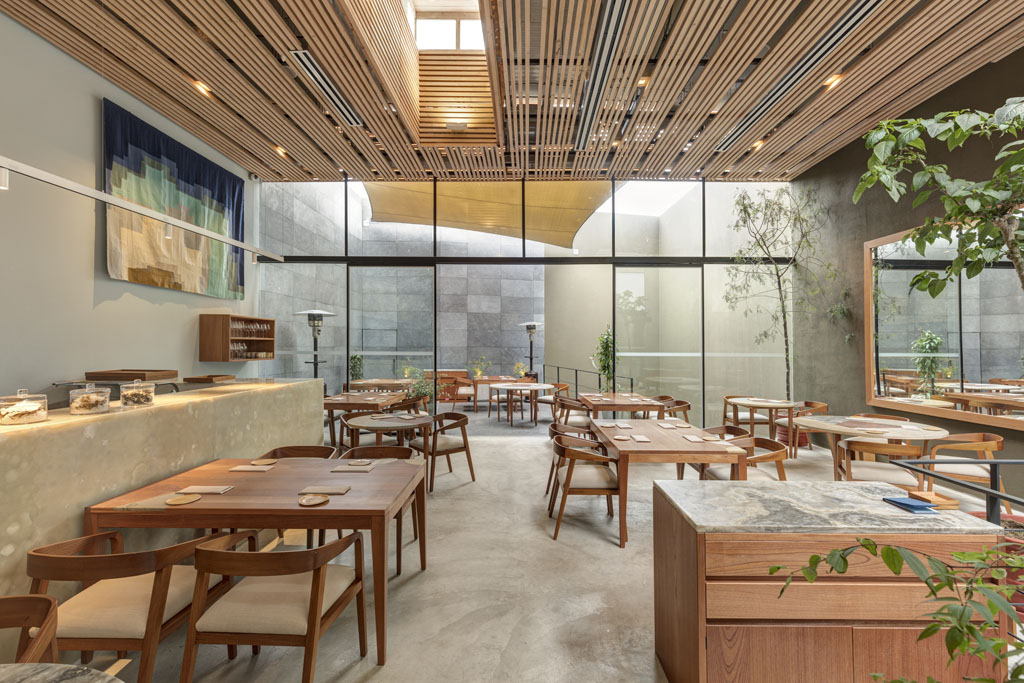
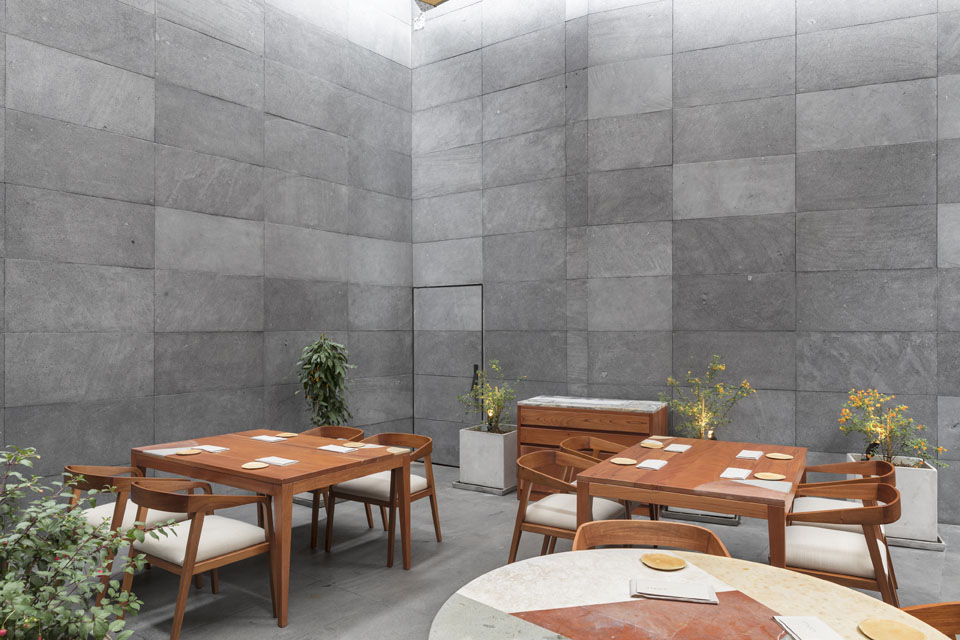
Mesas de madera amazónica y piedra volcánica. Amazon wooden and volcanic stone tables.
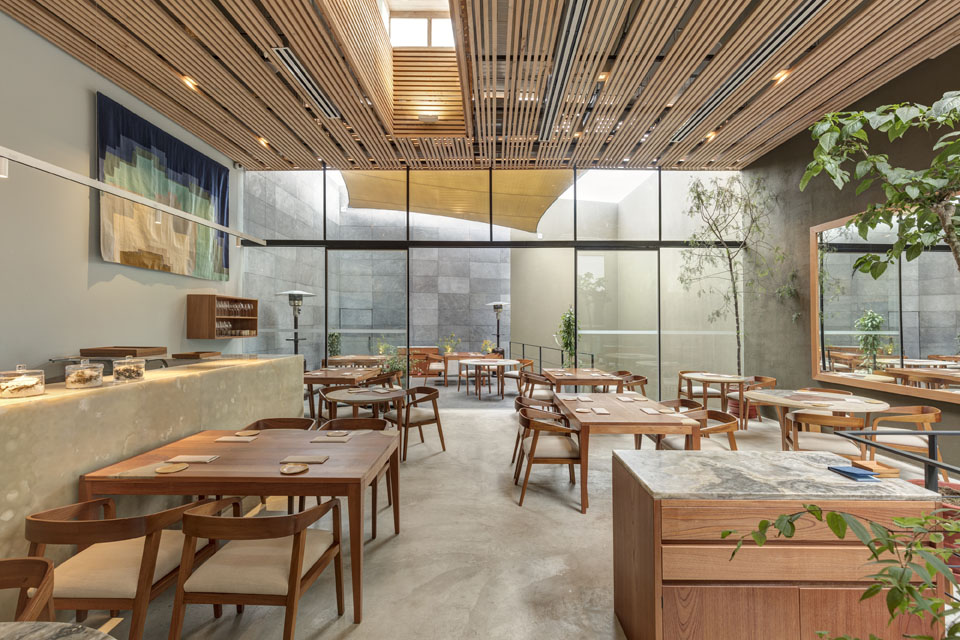
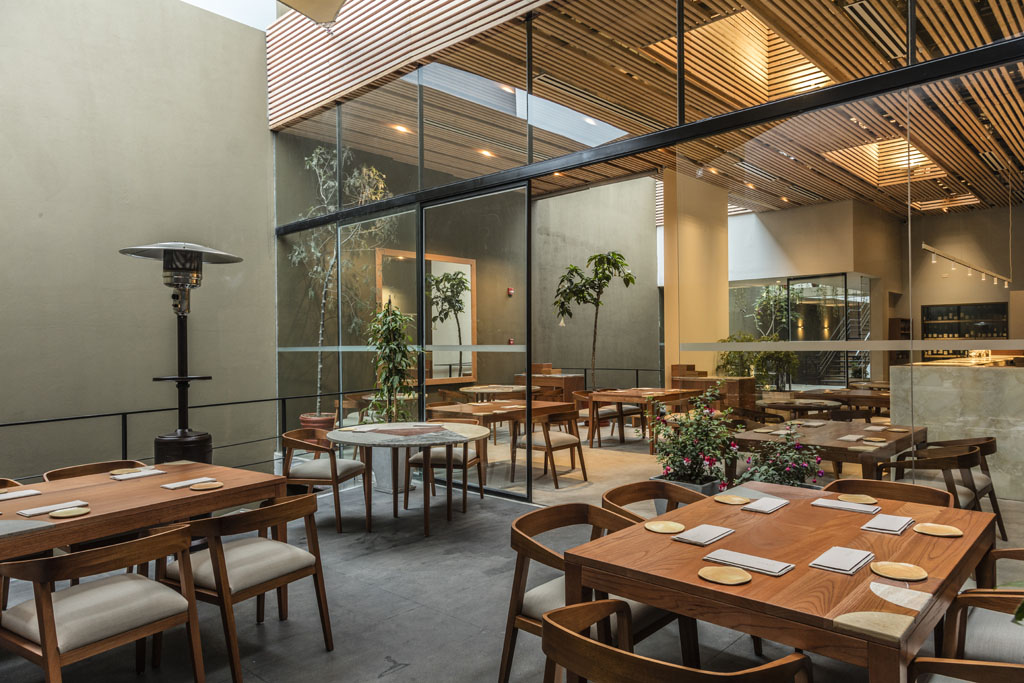

Mil Centro: Recover and transform tradition
Versión completa
https://www.instagram.com/p/BkJvhf0HjWr/?taken-by=estudioraffreyre
MIL Centro es uno de los nuevos proyectos gastronómicos del chef Virgilio Martínez, ubicado al borde del Complejo Arqueológico de Moray. El restaurante se encuentra a 3680 msnm, en el Valle Sagrado de los Incas, a 38 km de la ciudad de Cusco, muy cerca a las comunidades campesinas de Misminay y Kaccllarakay. Se cree que una de las funciones del complejo de Moray fue servir a los incas como centro de investigación agrícola. Su sistema de terrazas en forma de andenes circulares concéntricos les permitía experimentar ecosistemas y microclimas de diversas alturas. Se obtenía así una gran variedad de cultivos, además de un mejor entendimiento de la compleja geografía de diversas alturas que caracteriza al Perú.
VISIÓN DE CONTINUIDAD
Quien visita MIL Centro, puede reconocer el paisaje de Los Andes, integrándose a su geografía y ecosistemas por medio de los materiales y técnicas utilizados en su construcción: tierras, fibras y minerales del lugar, con sus colores y texturas particulares. A través de la diversidad de materiales y técnicas locales se recupera el sentido del tiempo y el espacio.
La nueva construcción busca integrarse al complejo arqueológico de Moray a través de elementos paisajistas. Tomar contacto con esta tecnología del pasado nos permite revalorar el paisaje cultural que representa y experimentar la coexistencia de distintos tiempos. Creemos fundamental que la arquitectura provea un lazo con las comunidades locales y de continuidad al legado histórico de sus tradiciones. Así, tras la remodelación del edificio, diseñado originalmente por los arquitectos Óscar Borasino y Ruth Alvarado, el restaurante se incorpora de manera orgánica y respetuosa al entorno natural, cultural y social de Moray.
PROGRAMA: RESTAURANTE LABORATORIO
Mil Centro , además de tener el programa de un restaurante, alberga a Mater Iniciativa, un centro de investigación biológica y cultural abocado a explorar de manera interdisciplinaria la biodiversidad de productos y técnicas ancestrales de los Andes. También acoge a Flavour Lab Cacao, un laboratorio donde se trabaja e investiga el cacao chuncho, una especie que crece de manera silvestre a 1050 msnm en Quillabamba, ciudad cusqueña ubicada en la frontera con la Amazonía. Finalmente, al programa del bar se adiciona un microlaboratorio dedicado a los fermentos, destilados y macerados con especies locales.
PAISAJISMO Y AGRICULTURA COMUNITARIA
La experiencia en MIL Centro buscó desde un inicio el contacto directo del público con los procesos agrícolas comunitarios y las vistas del paisaje de Moray. La idea principal de la que se desprende este proyecto es mantener la armonía con la botánica de la zona e integrar los procesos agrícolas y paisajistas a la experiencia gastronómica del restaurante.
El Complejo Arqueológico de Moray se encuentra rodeado por huertas, a cargo de las comunidades de Misminay y Kaccllarakay, donde se siembran más de cincuenta y cinco variedades locales de papas nativas, habas, mashua, quinua y kañihua. También encontramos zonas de secado al sol de tubérculos y hornos artesanales de tierra llamados “huatias”. Estas dos actividades gastronómicas provienen de rituales que se realizaban al aire libre en épocas prehispánicas.
Dentro del restaurante, los ambientes están organizados alrededor de un patio central de piedra y un jardín interior donde se sembraron especies nativas, y que da especial protagonismo al árbol de la queñua. Actualmente este árbol andino se encuentra en extinción, y existe un programa nacional que busca su recuperación y reserva. Su capacidad de regular el clima, prevenir la erosión de suelos y alimentar manantiales y puquios, lo hace de gran importancia para el ecosistema del valle.
MATERIALIDADES Y NUEVAS TÉCNICAS LOCALES
Decidimos usar materiales utilizados por los habitantes del valle y técnicas artesanales cuyas prácticas ya no son habituales como lo fueron en el pasado: el tejido con fibra de ichu, el labrado de piedra y el acabado con adobe y barro de colores. Nuestro primer paso fue volver a estas técnicas constructivas y conocerlas en profundidad. Buscamos recuperarlas para luego reinterprentarlas e integrarlas con las tecnologías y procesos contemporáneos, posibilitando su desarrollo e reinvención. Creemos que existe una relación estrecha entre el material, el clima, la altura, la historia y las tradiciones artesanales de cada lugar.
El ichu es un tipo de pasto que crece en los Andes Sudamericanos, a partir de 3800 msnm Fue utilizado por los incas para distintas actividades, entre ellas, el techado de sus edificios y la construcción de puentes. Esta es una técnica que aún perdura en algunos lugares del Perú, algunos de sus vestigios son el puente colgante de Queshuachaca en Cusco y los techos de las iglesias de los distritos de Incahuasi y Marcapata, ubicados en los departamentos de Lambayeque y Cusco respectivamente.
Reinterpretar esta técnica y usar esta especie vegetal para los techos del restaurante fue nuestra manera de recuperar el imaginario del pasado, transformarlo y proyectarlo hacia el futuro. Tuvimos, desde un inicio, el interés de que las comunidades cercanas se integren al proceso del techado, así como en el pasado distintas localidades se reunían cada cierto tiempo para llevar a cabo el ritual de renovación “Minka”, en el que volvían a tejer los techos de sus edificios.
Las tierras también significaron una parte importante de la investigación de materiales. En las fachadas exteriores se experimentó con un sistema constructivo basado en la mezcla de la tierra con resinas provenientes de los cactus. Esta resina impermeabiliza la tierra, protegiéndola de la erosión de la lluvia. El tratamiento permitió que los muros exteriores se mimeticen con el entorno natural al poseer el mismo color que la tierra del valle.
Para el tratamiento de los muros interiores, se recolectaron distintos tipos de tierra de los alrededores, y se aplicaron en los salones. Predominaron las variaciones sutiles de los blancos y grises, cuyo resultado evidencia la diversidad de tonos y tipos de tierra que existen en un mismo lugar.
La escalera de ingreso al restaurante se diseñó con bloques de piedra trabajados por artesanos locales. Los pasos de la escalera se transforman gradualmente en pequeñas terrazas donde se siembran plantas nativas. De esta manera, se crea un pequeño espacio de transición, conectando, a través de su materialidad lítica y forma escalonada, la zona arqueológica y el nuevo restaurante MIL Centro.
Finalmente, con Mil Centro, buscamos minimizar el impacto en áreas de preservación, evidenciando que los materiales naturales de la zona son más sostenibles que los que predominan en las construcciones de Cusco moderno. Por otro lado, creemos que la importancia de preservar las técnicas tradicionales de nuestro país radica en su capacidad de envolver conocimientos y prácticas especializadas que se han desarrollado durante miles de años, de generación en generación.
DE AQUÍ EN ADELANTE // ARQUITECTURA AHORA
MIL Centro es un proyecto que busca recuperar y transformar las técnicas ancestrales y el uso de elementos naturales que materializaron la vida de las poblaciones originarias en el Perú: la construcción de sus centros religiosos, sus casas, sus herramientas y sus diferentes tipos de tecnologías y rituales. Queremos poner nuevamente en valor una visión arquitectónica que se basa en la relación directa con el entorno natural, material y cultural que busca intervenir.
Mater Iniciativa: http://materiniciativa.com/
Complete version
https://www.instagram.com/p/BkJvhf0HjWr/
MIL Centro is a new gastronomic project by chef Virgilio Martínez, located on the edge of the Moray Archaeological Complex. The restaurant sits at 3680 m.a.s.l. on the Sacred Valley of the Incas, 23 miles from the city of Cuzco, close to the village communities of Misminay and Kaccllarakay. The Moray complex is believed to have served as an agricultural research center under the Incas. Its terrace system, shaped as concentric circular platforms, allowed them to experiment with ecosystems and microclimates at different heights. This yielded them a great variety of crops, not to mention a deeper understanding of the complex geography of the different characteristic altitudes of Peru.
A VISION OF CONTINUITY
Visitors to MIL Centro will recognize the Andes landscape in it, and how it integrates with its geography and ecosystems through the materials and techniques employed in its construction: local earth, fibers and minerals, each with its particular color and texture. Through the diversity of local materials and techniques, a sense of time and space is recovered.
The new construction seeks to integrate into the archaeological complex of Moray through landscaping elements. Engaging with this ancient technology allows us to revalue the cultural landscape it represents, and experience the coexistence of different times. We believe it is paramount for architecture to tie into the local communities and bring continuity to the historical legacy of their traditions. This way, after remodeling the building, originally design by architects Óscar Borasino and Ruth Alvarado, the restaurant merges into Moray’s natural, cultural and social setting organically and respectfully.
PROGRAM: LABORATORY RESTAURANT
Besides its restaurant program, MIL Centro is home to Mater Iniciativa, a biological and cultural research center devoted to an interdisciplinary exploration of the Andes’ product biodiversity and ancient techniques. It also houses Flavour Lab Cacao, a laboratory that researches and works with cacao chuncho, a wild species of cacao that grows in Quillabamba, a city in the Cuzco region bordering the Amazon at 1050 m.a.s.l. Finally, the bar program is complemented by a microlaboratory dedicated to ferments, distillates and macerated liquors based on local species.
LANDSCAPING AND COMMUNITY AGRICULTURE
From its beginnings, MIL Centro sought direct contact between the public and the community agricultural processes and sceneries of Moray. The main idea behind the project is to preserve harmony between the botany in the area and integrate the agricultural and landscaping processes into the restaurant’s gastronomical experience.
The Moray Archaeological Complex is surrounded by orchards belonging to the Misminay and Kaccitarakay communities, where they cultivate over 50 native potato, fava bean, mashua, quinua and kañihua varieties. In addition, there are special areas for sun drying tubers and for artisanal earthen ovens called huatías. These two gastronomic activities are descended from the open air rituals of pre-Hispanic times.
Inside the restaurant, the spaces are organized around a central stone patio and an inner garden featuring native species, with the queñua tree as its main protagonist. The Andean queñua tree is currently endangered, and there is a national program for its recovery and preservation. Its capacity to regulate the weather, prevent soil erosion and feed water springs makes it essential to the valley’s ecosystem.
MATERIALITY AND NEW LOCAL TECHNIQUES
We decide to use materials employed by the inhabitants of this valley, as well as artisanal techniques whose practice isn’t commonplace like in the past: weaving with ichu fiber, stone carving and finishes in adobe and colored clays. The first step was to harken back to these construction techniques and get to know them in-depth. We sought to recover them in order to reinterpret and integrate them with contemporary technologies and processes, allowing to develop and reinvent them. We believe in a close relationship between the materials, climate, altitude, history and artisanal traditions of each place.
Ichu is a type of grass that grows from 3800 m.a.s.l. in the South American Andes. It was used by the Incas for various activities, such as roofing their buildings and weaving bridges. This technique endures in some locations across Perú: its vestiges include the hanging bridge of Queshuachaca, in Cuzco, and the church ceilings of the Incahuasi district in Lambayeque and the Marcapata district in Cuzco.
Reinterpreting this technique and choosing this plant species for the restaurant’s roofs was our way to salvage the collective consciousness of the past, transform it and project it upon the future. From the start, we were interested in having the nearby communities involved in the roofing process, just as different communities would periodically come together in the past to celebrate the Minka, the renovation ritual of weaving new roofs for their buildings.
Important material research was also done to choose the earth. For the outer facade, we experimented with a building system based on mixing the earth with resin derived from cacti. The resin waterproofs the earth and protects it from erosion due to rain waters. The treatment allowed the outer walls to blend in with the natural surroundings by showing the same color as the earth in the valley.
For the treatment of the inner walls, we collected different kinds of earth from the surrounding areas and applied them to the halls. The predominant variations on white and grey evidence the diversity of tones and types of soil that exist in a single place.
The entrance stairway to the restaurant was designed with blocks of stone worked by local artisans. The steps in the stairway gradually become small terraces where native plants are cultivated. This way, we create a small transition space whose lytic materiality and graduated shape connect the archaeological area and the new MIL Centro restaurant.
Finally, at MIL Centro, we seek to minimize the impact to protected areas, proving that the natural materials in the area are more sustainable that the materials that dominate contemporary Cuzco structures. On the other hand, we believe that the importance of preserving our country’s traditional techniques lies in its capability to encompass specialized knowledge and practices that were developed over thousands of years and passed down for generations.
FROM HERE ON // ARCHITECTURE NOW
MIL Centro aims to recover and transform the ancient techniques and use of natural elements that materialized the lives of the original peoples of Peru: the construction of its religious centers, their homes, their tools and their different kinds of technology and rituals. We want to restore value to an architectural vision based on its direct relation to the natural, material and cultural setting it means to intervene.
Mater Iniciativa: http://materiniciativa.com/
LOCATION MORAY ARCHEOLOGICAL CENTER
MATERIAL CLAY, FEATHERGRASS FIBRE AND WOOD
YEAR 2017
STATUS DESIGNED AND BUILT
REFURBISHMENT WORK
ESTUDIO RF
ARCHITECTURE AND DESIGN
ESTUDIO RF
ARCHITECTURE GENERAL ASSISTANCE
ARCH. JUAN JOSE BARBOZA
YULIANA SANTA MARIA
MANUFACTURER
DAVID HERRERA
ORIGINAL ARCHITECTURAL WORK
OSCAR BORASINO AND RUTH ALVARADO
PHOTOGRAPHY
GUSTAVO VIVANCO LEON
TEXT TRANSLATION
NICOLAS DEL CASTILLO

Vista lateral del restaurante Mil Centro en Cusco. Side view of Mil Centro restaurant in Cusco.

Patio central de Mil rinde homenaje al árbol de queñua. Mil's central patio pays tribute to the Queñua tree.

Diseño Interior: elementos construidos con materiales naturales y técnicas tradicionales y contemporáneas. Interior Design: elements built with natural materials and traditional and contemporary techniques.

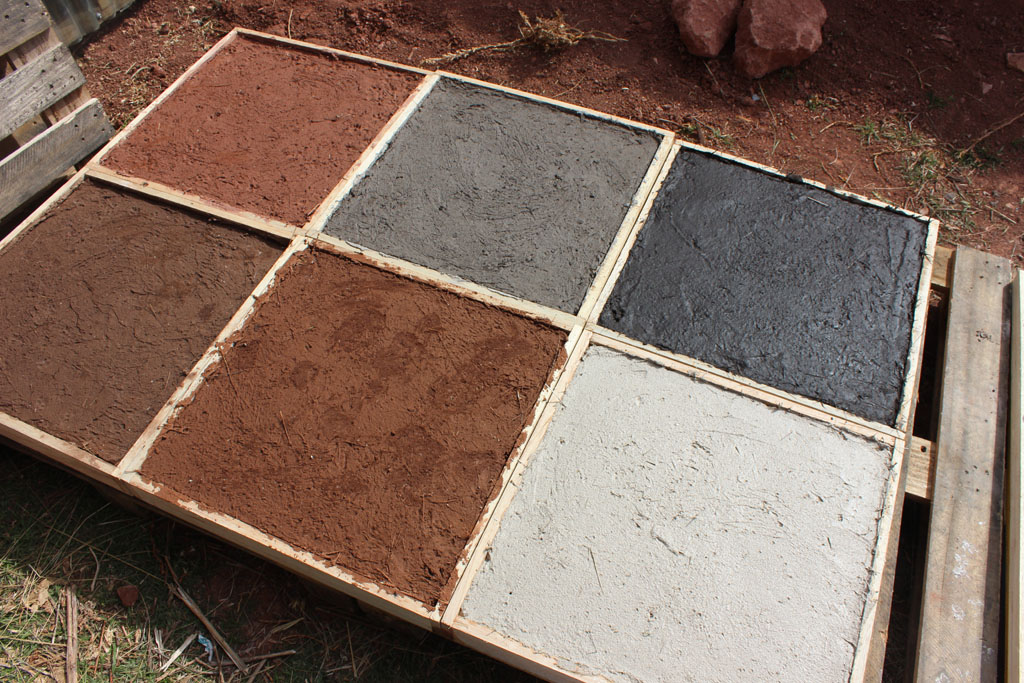
Prueba de distintas tierras del ande peruano para revestir los muros del restaurante. Different peruvian andean lands being tested for the restaurant'´s wall coating.


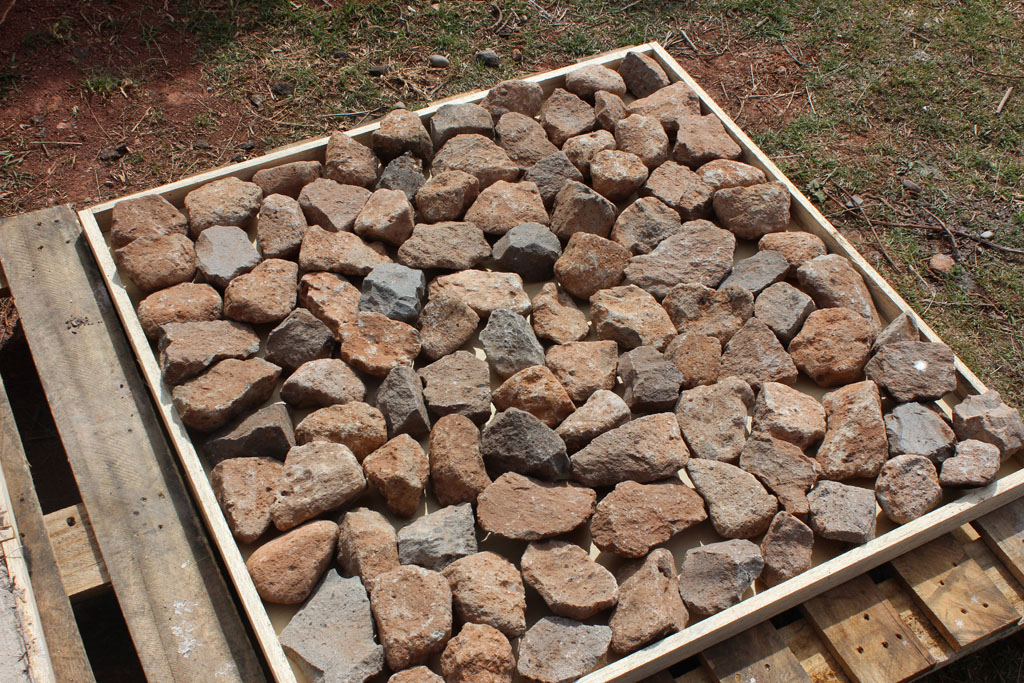
Materiales saludables: prueba de piedras locales. Healthy materiales: local stones testing.

El techo de Mil Centro fue tejido con fibra de ichu a partir de la integración de técnicas constructivas tradicionales y contemporáneas. Mil Centro's roof was woven with ichu fiber, incorporating traditional and contemporary construction techniques.
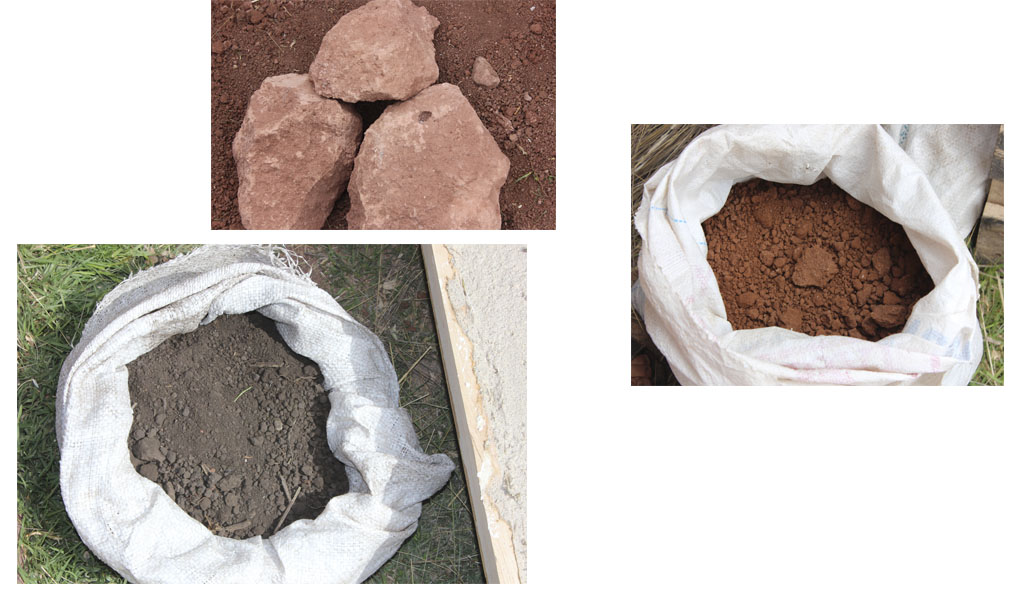

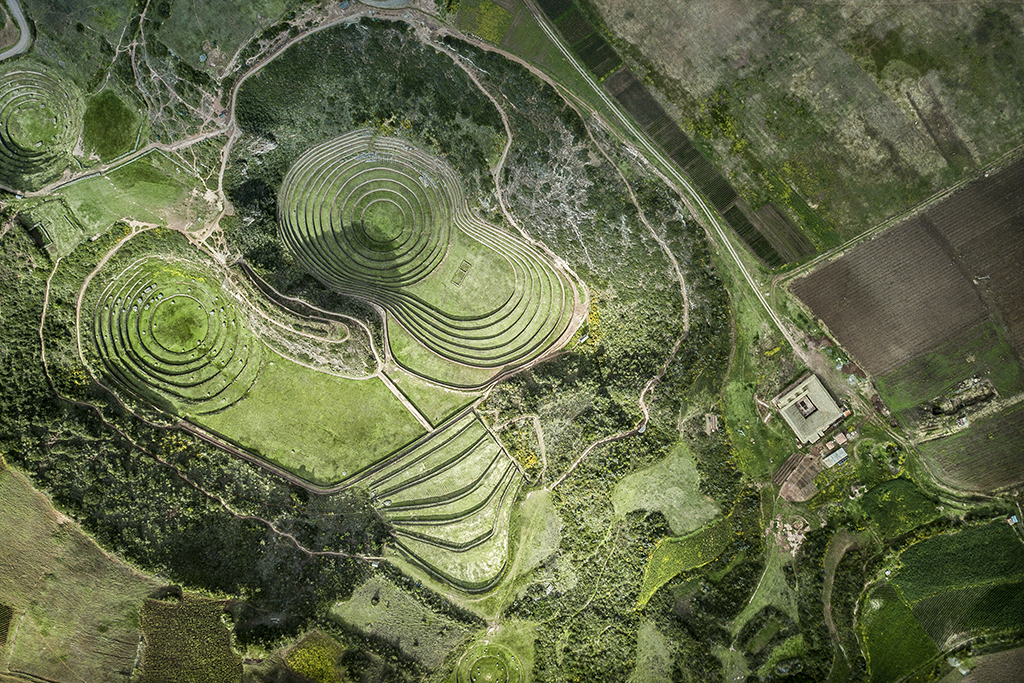
La arquitectura de Mil Centro busca integrarse con la botánica y la historia de Moray. Mil Centro's architecture concept seeks to integrate the restaurant with Moray's botany and history.
Central Restaurante: The architecture of biodiversity
The new venue of chef Virgilio Martinez’s Central Restaurante develops a contemporary architecture based on the recovery of traditional techniques and materials belonging to the diverse ecosystems of Peru, by transforming an old house in the Barranco district, in the Peruvian coast, into a space where different times and materialities coexist.
The project also houses Kjolle, the new restaurant by chef Pia León, as well as Mayo bar and Mater Iniciativa, a center for the biological and cultural study of our biodiversity.
The new Central restaurant originates from a quest to understand the landscape we inhabit in order to relate to the diversity of our ecosystems and their interactions. Peru is a megadiverse country home to more than 70% of the planet’s biodiversity, from its cold seas and desert coastline to the Amazonian tropical rainforest or the Andes.
Through an understanding of the particular physical and material conditions of this heterogeneous landscape, we can recover and recreate the biodiverse worldview of our territory. The architecture we conceive integrates these landscapes by employing their materials, thus recovering and developing local and sustainable construction systems that allow us to reestablish physical contact with the habitat.
We seek to establish a direct link between the body that occupies the space and the different materials that make up the landscapes, as well as the worldviews that make up our collective habitat. We believe in a continuity between construction techniques developed by human beings and the natural diversity of each place.
Our intention is to recover and recreate a material language of diversity that can be integrated into our future habitat. This way, by dissolving the barriers between past, present and future, natural and artificial, urban and rural, technologic and archaic, and industrial and artisanal, we incorporate feral materials to our design process, which reveal moments in the continuous transformation of the territory that has taken place across natural cycles for thousands of years.
With this project, we want to transcend the generic language of present architecture by incorporating local materials into its design and recovering the artisanal techniques of Peru. Visitors to Central will find materials such as the earths of Lima, the woods of the Amazon and the stones of the Andes. They will also see techniques such as loom weaving, quincha, stone carving and artisanal works in copper and bronze.
ARCHITECTURE, PRESERVATION AND SUSTAINABILITY
The project is located in Barranco, a district whose historical layers are still visible. Barranco was originally part of a pre-Columbian farming valley complete with irrigation channels. Later, during the colonization, manors were built and it became a summer spot. With the city’s modernization process, many of the district’s colonial houses were demolished and replaced with modern concrete buildings, while others were declared a cultural heritage.
From the beginning, we meant to evidence this place’s transformation process, while differentiating its many interventions over time by contrasting the new, enlarged volumes with existing architectural elements that were recycled or preserved. We reinforced the existing concrete structures to support new weight, giving them a second life without generating waste. On the other hand, we decided to preserve all the vegetable species and material elements found in the area and incorporate them to the project as part of the space’s memory. In addition, we rescued more than twenty trees from neighboring grounds and transferred them into the new restaurant’s area.
During the structural reinforcement process, which was done with carbon fiber, we opted to leave the traces of intervention in plain sight to evidence the passage of time in the walls, columns and beams. Through the architecture, the visitor can read into a geology of different material layers that tell what is preserved, what is remodeled and what is expanded.
In addition to our aim of recreating our biodiversity’s collective consciousness, we chose the new materials and finishes under the principle of generating minimum impact on our natural habitat. We chose materials whose extraction, transformation and application can be done sustainably without unleashing harmful effects or toxic by-products on the environment.
To warrant the project’s sustainability, we created independent sewage networks to treat waters separately and devised a treatment plant in order to purify greasy or grey waters and reuse them in our gardens. It was important that the restaurant addressed the climate requirements of the coastal desert ecosystem of Peru, which is characterized by its dryness and scarce rains.
MANTAINING CONTINUITY BETWEEN ARCHITECTURE AND THE LANDSCAPE
The concept for the new Central restaurant begins with an experience of the Limean desert ecosystem and traditional Barranco gardening; the garden that welcomes the visitor is cultivated with pacae, avocado and other tree species common to the coastal desert. Our main goal was to preserve the maximum amount of existing green area while keeping constructed areas to a minimum, given that the architectural concept stems from the union between landscape and architecture: a place where the boundaries between landscape and interior spaces are dissolved. This way, we create a continuity between the materiality of the landscape and architectural materiality.
The natural desert rocks and earth in the garden gradually become elements of the architecture, such as stairs, floors, wall claddings and lavatories. Visitors can witness how the natural habitat transforms into the urban space. Moreover, the inner gardens articulate the space, providing natural lighting and ventilation to the interiors.
In designing the main hall of Central, we were respectful of the placement of existing trees across the terrain, and consequently the new metallic structure adapts itself to the vegetation. Its enclosure is a system of pivoting and sliding glass, wood and earth panels. These different configurations create a variable relationship between the interior space and the gardens and orchards, while enabling the facade to transform in accordance to the seasons. In addition, the earth panels, crafted with the traditional quincha construction system, establish a relationship with the consciousness of ancient pre-Hispanic and colonial buildings of the coastline, while acting as a thermal and acoustic element.
The hall ceiling was designed to house a xerophile garden to act as a radiation-isolating element and a natural light filter. Finally, as part of the architectural recycling, we cast new concrete slabs featuring elements that serve as pots for trees and plants on the second level.
EXTRA-URBAN POST-INDUSTRIAL MATERIALITY
It is necessary to find a balance between industrial production materials and artisanal materials that enrich and add warmth to the architectural experience. Hence, the majority of materials the studio employs in its finishes are of artisanal making. For the project, we monitor the materials from their origins in their natural state to their manual transformation. We assembled a team or artisans who enriched the techniques and processes with their specialized knowledge.
In Peru, there is a fluid relationship between the materials of each landscape and the artisans’ knowledge. These insights are part of the immaterial heritage of our country, as they’re based on traditions that have developed for thousands of years.
Below, we detail the origins of each material, the artisans who produced them, and the techniques that we deem more important to the project.
1. STONE – Artisan Roberto Román, Ayacucho.
TRAVERTINE, JUNÍN – Wine cellar doors
VOLCANIC ROCKS, AREQUIPA – Main hall floor and Kjolle patio
ONYX, AYACUCHO – Kjolle bar
ONYX, HUARAZ – Mayo bar
GRANITE, QUIRIO AND HUAYCÁN, LIMA – Lavatorie
2. ANIMAL FIBERS – Artisan Elvia Paucar, Junín
WOOL FABRICS, SAN PEDRO DE CAJAS, JUNÍN – Curtains of Central and loom at Kjolle
3. EARTHS. Adobe and quincha artisan Erick Malasquez
CLAY SOILS, CHILCA, LIMA – Facade and pivoting panels
4. WOODS. Fine woodworker Luis Mucha
IPE AND SHIHUAHACO WOOD, PUCALLPA – Pivoting panels
ARCHITECTURE AND DESIGN
ESTUDIO RF
DESIGN FINISHES TEAM
ARCH SOLANGE JACOBS
DIS YULIANA SANTAMARIA
ARCHITECTONIC DESIGN TEAM
ARCH JUAN JOSE BARBOZA
ARCH ANDRÉS GUZMÁN
ASSISTANCE IN PRODUCTION OF STONE FINISHES
ARCH JAVIER RUBIO
TECHNICAL TEAM
WOOD SPECIALIST
LUIS ALBERTO MUCHA
STONE SPECIALIST
ROBERTO ROMAN
CLAY SPECIALIST
ERICK MALASQUEZ
WEAVE ARTISAN
ELVIA PAUCAR
TEXTILE ARTIST
ANA TERESA BARBOZA
LANDSCAPING ASSISTANCE
ALVARO ESPEJO
OVERALL MANAGEMENT OF THE PROJECT
ARCH MARÍ RETAMOZO
LIGHTING
HILITE
CIVIL WORK MANUFACTURER
BGS INGENIEROS SAC
BUILD
JORGE ROMERO
ELECTRICAL AND MECHANICAL INSTALLATIONS
JULIO CESAR RAFFO
SANITATION FACILITIES
JOSE UBALDO
METAL AND WOOD CARPENTRY
MATRANSA
SOUND
LIMA SOUND
PHOTOGRAPHY
JUAN PABLO MURRUGARA
EDUARDO HIROSE
MUSUK NOLTE
TEXT TRANSLATION
NICOLAS DEL CASTILLO
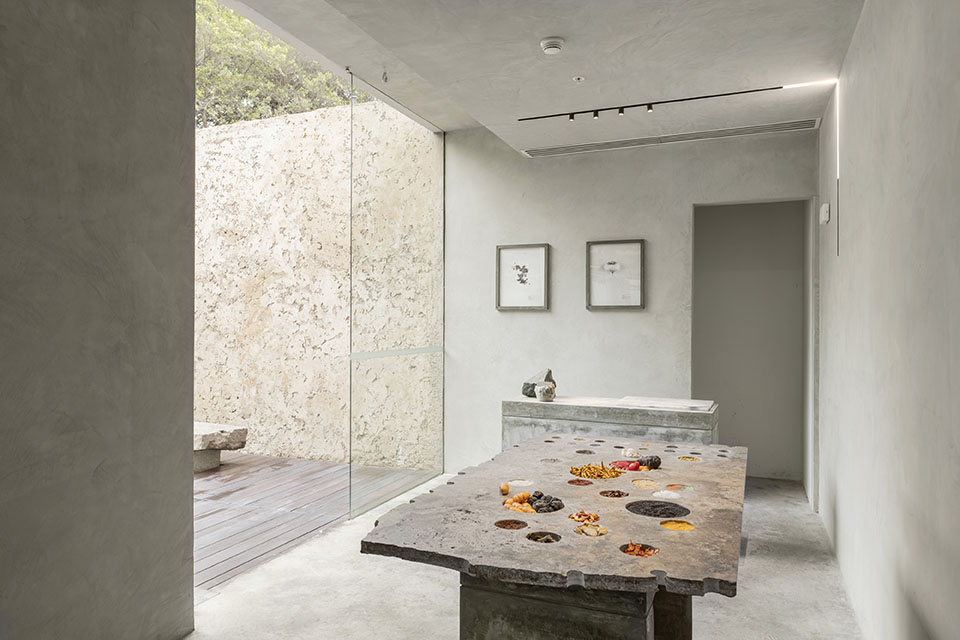
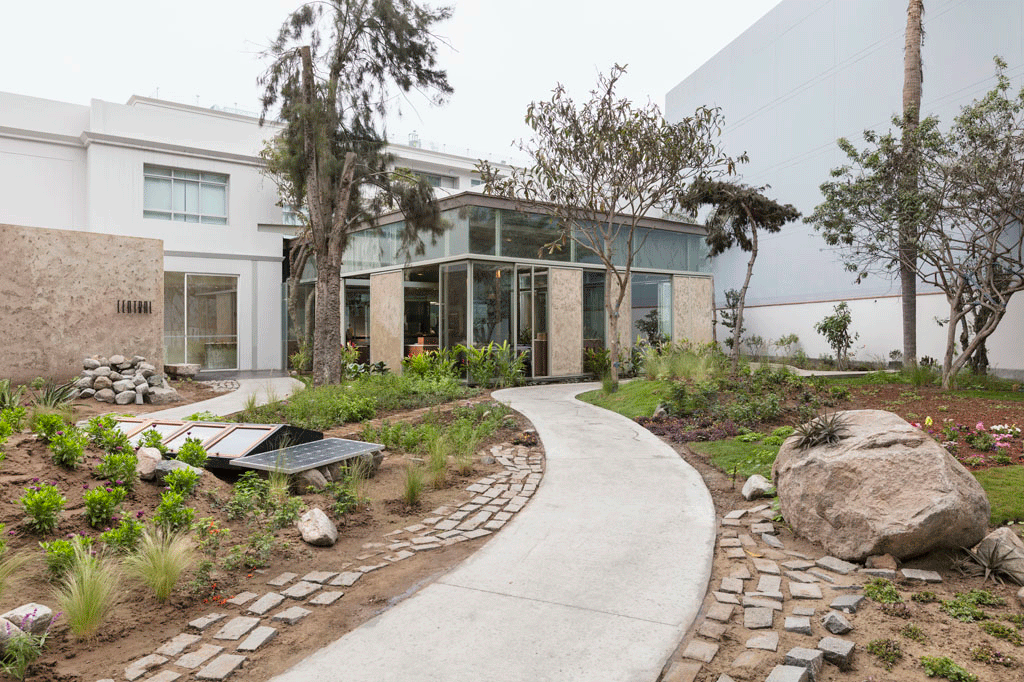
La entrada del restaurante Central consiste en un sistema de paneles pivotantes y corredizos de vidrio, madera y tierra. Central's entry system consists in pivoting panels and sliding glass, wood and earth doors.
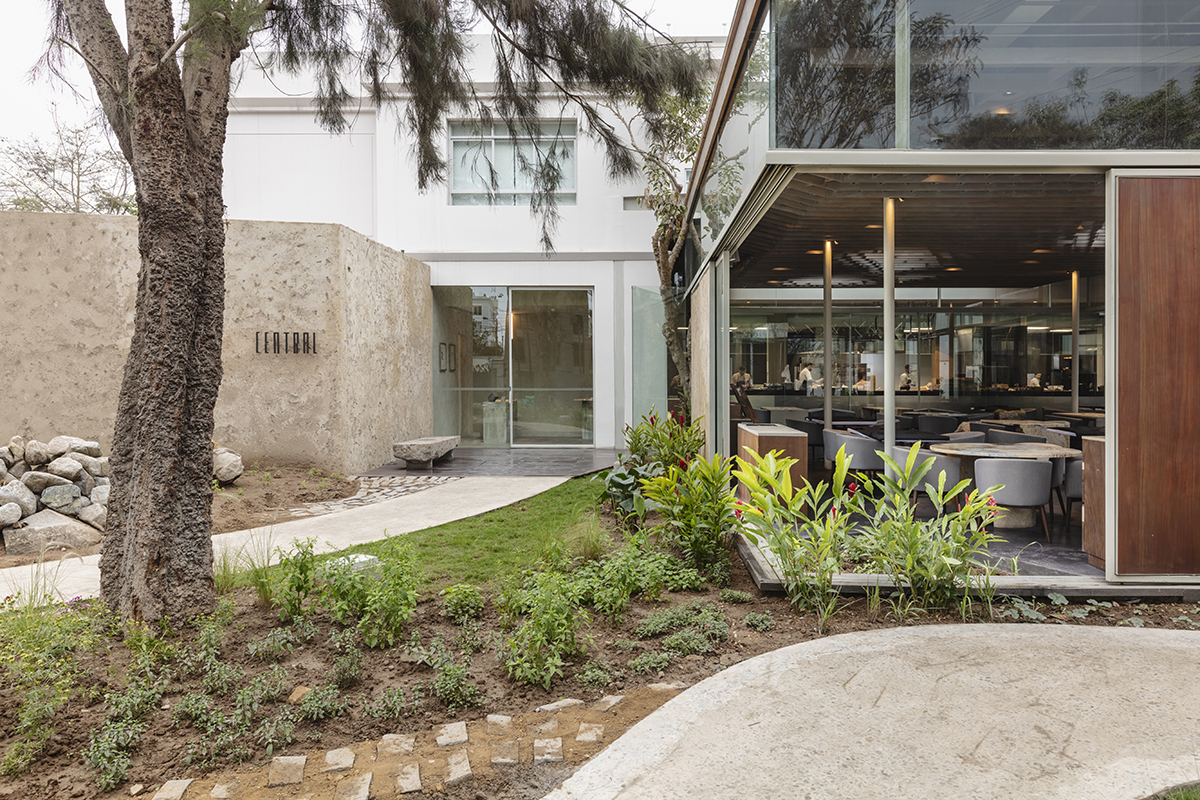
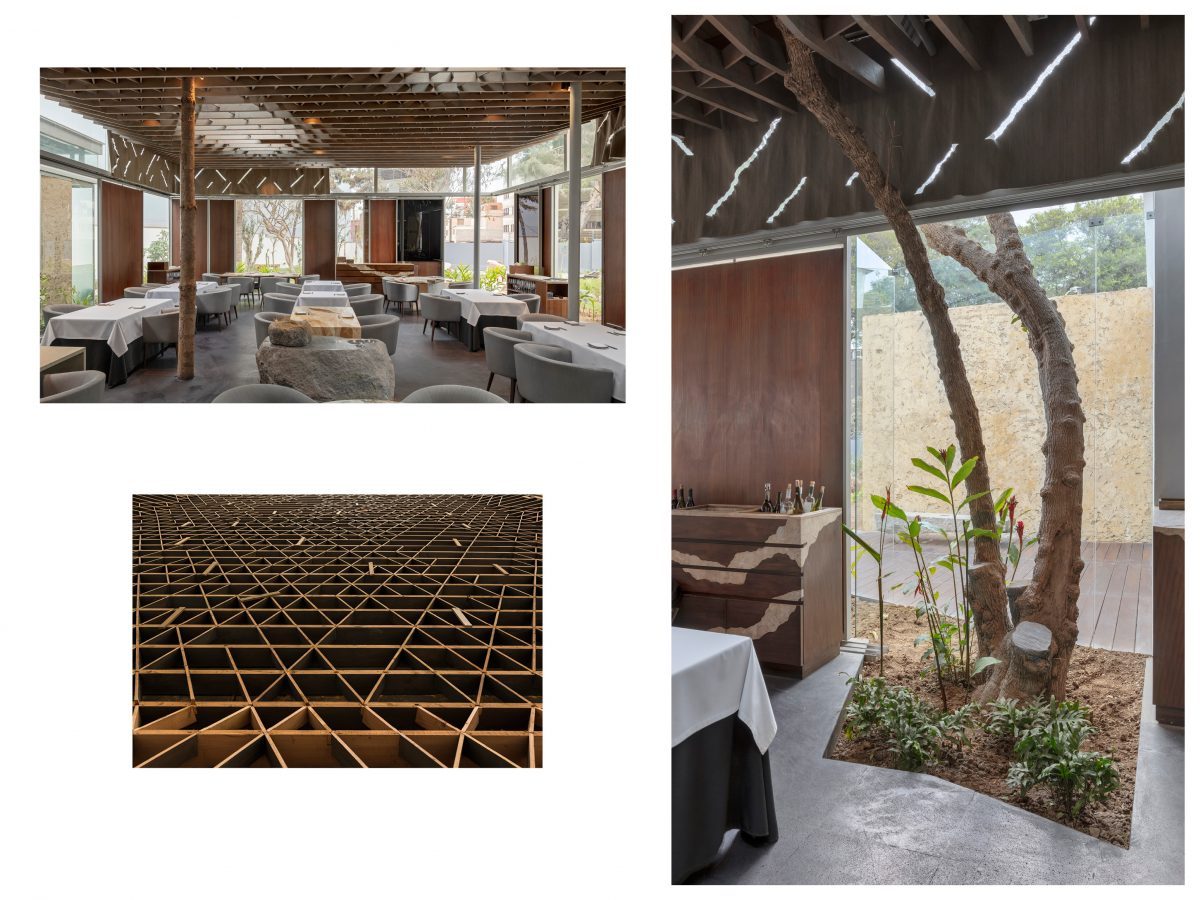
Arquitectura sostenible. Los árboles existentes fueron integrados a la arquitectura del restaurante. Sustainable architecture. The existing trees were integrated into the restaurant architecture.
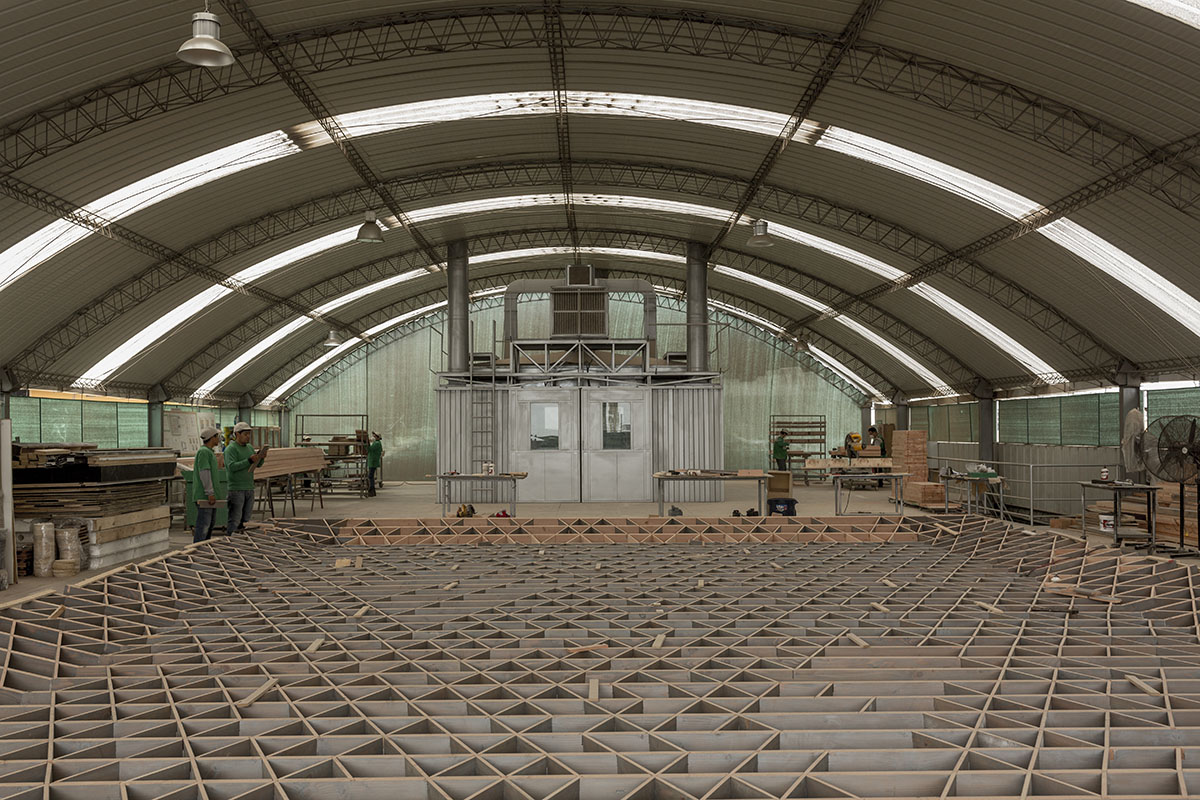
Obra en proceso. Falso cielo de madera amazónica. Work in progress. False ceiling made of amazon wood.

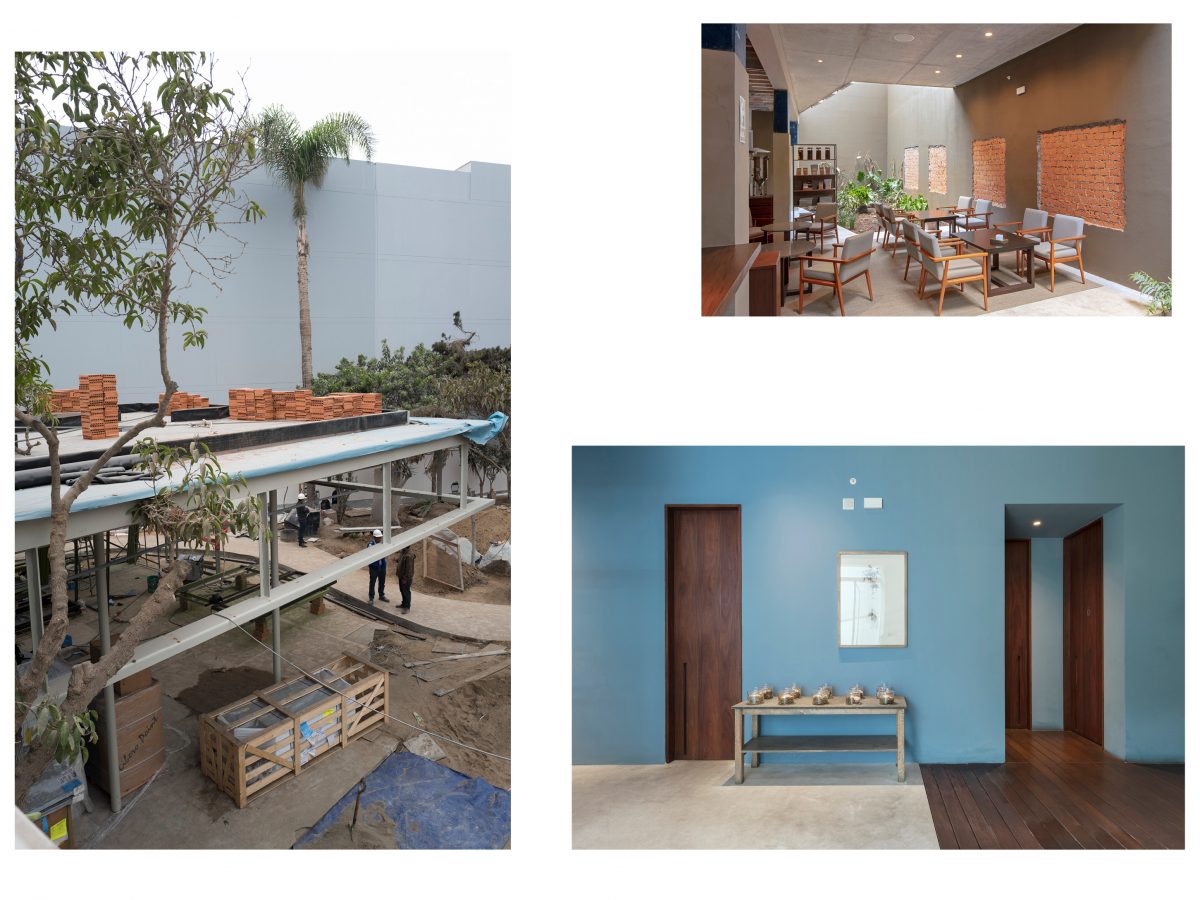
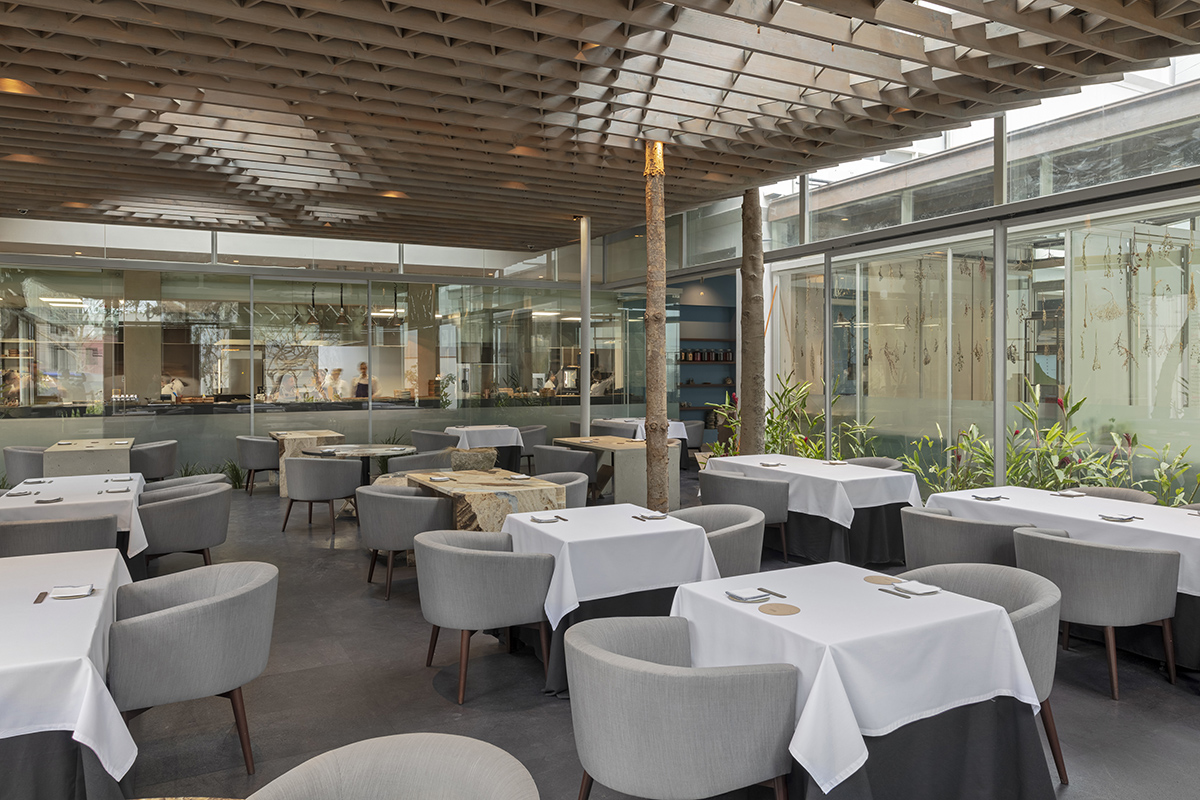
Salón principal de Central Restaurante. Central's main hall.
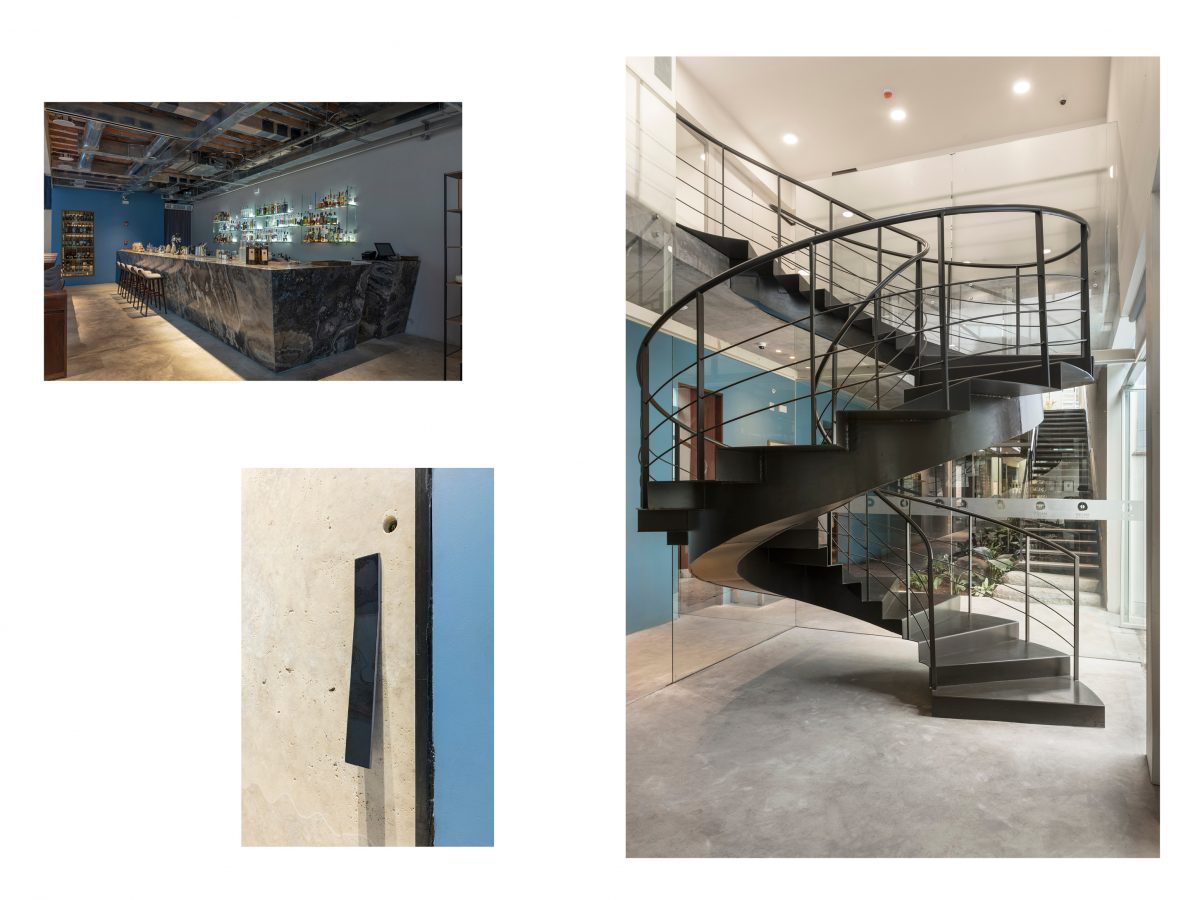
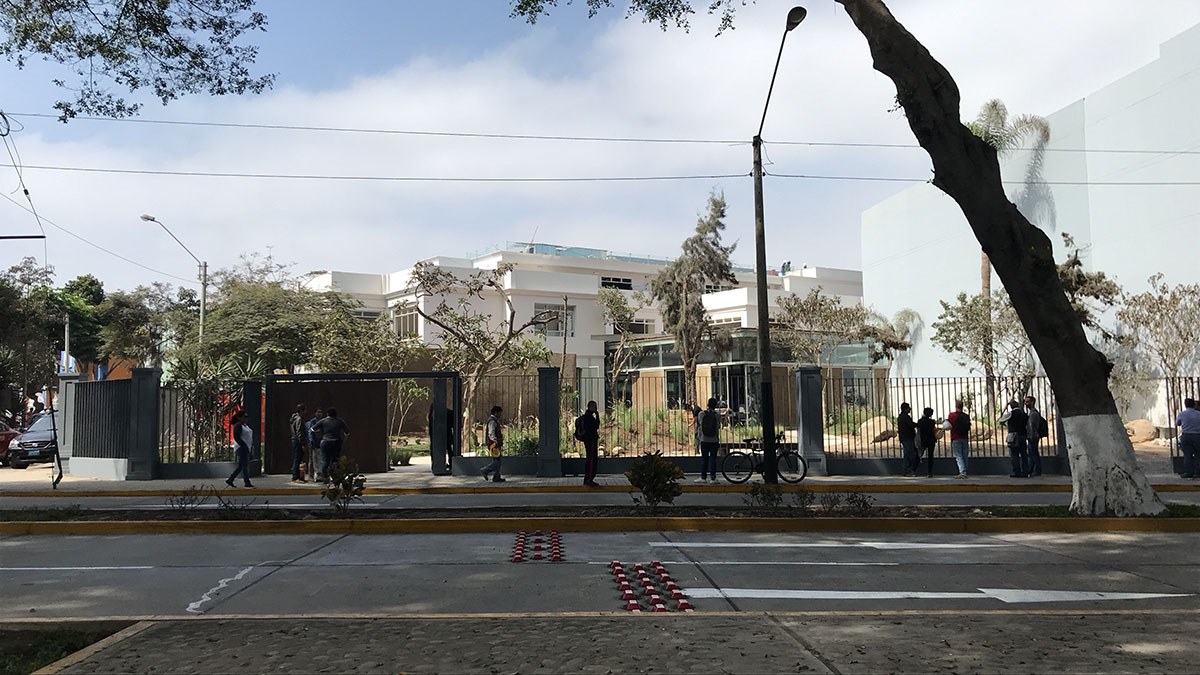
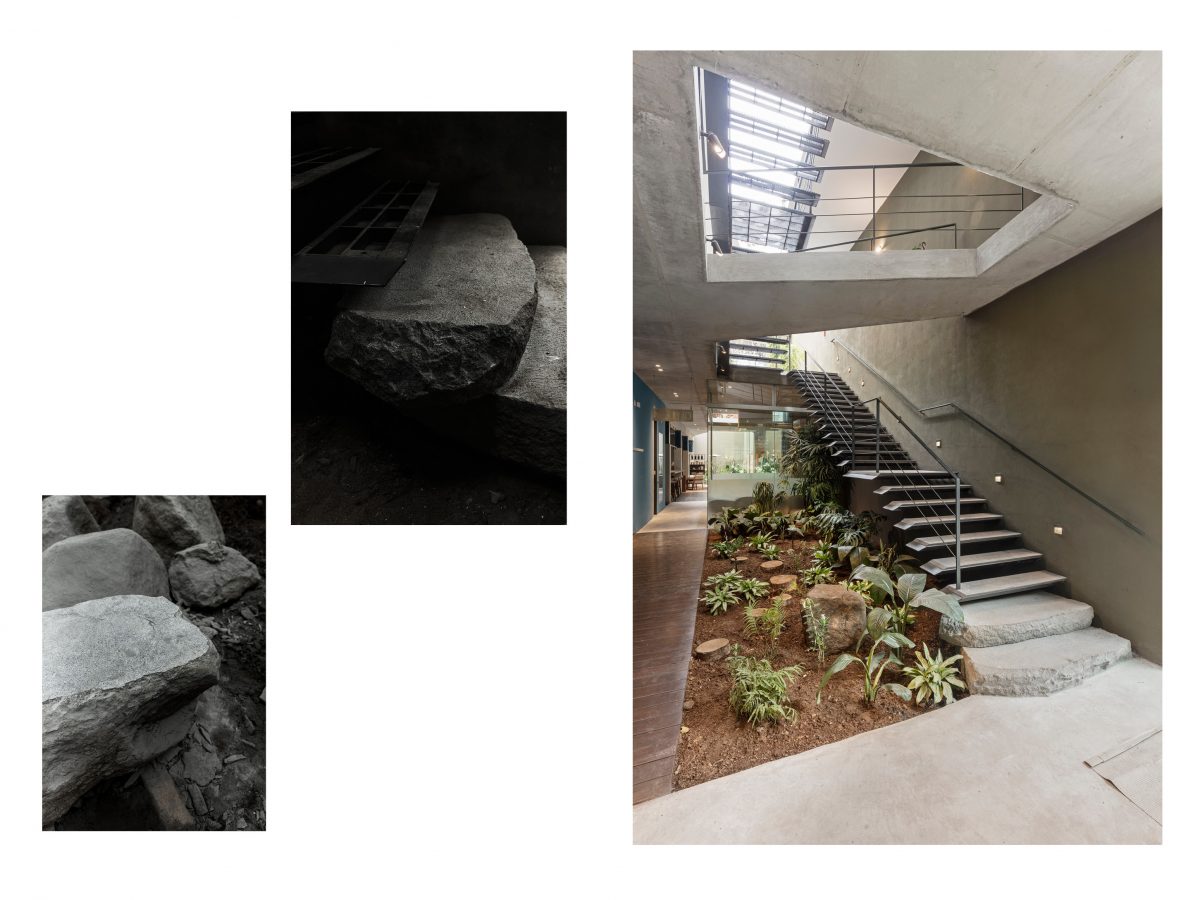
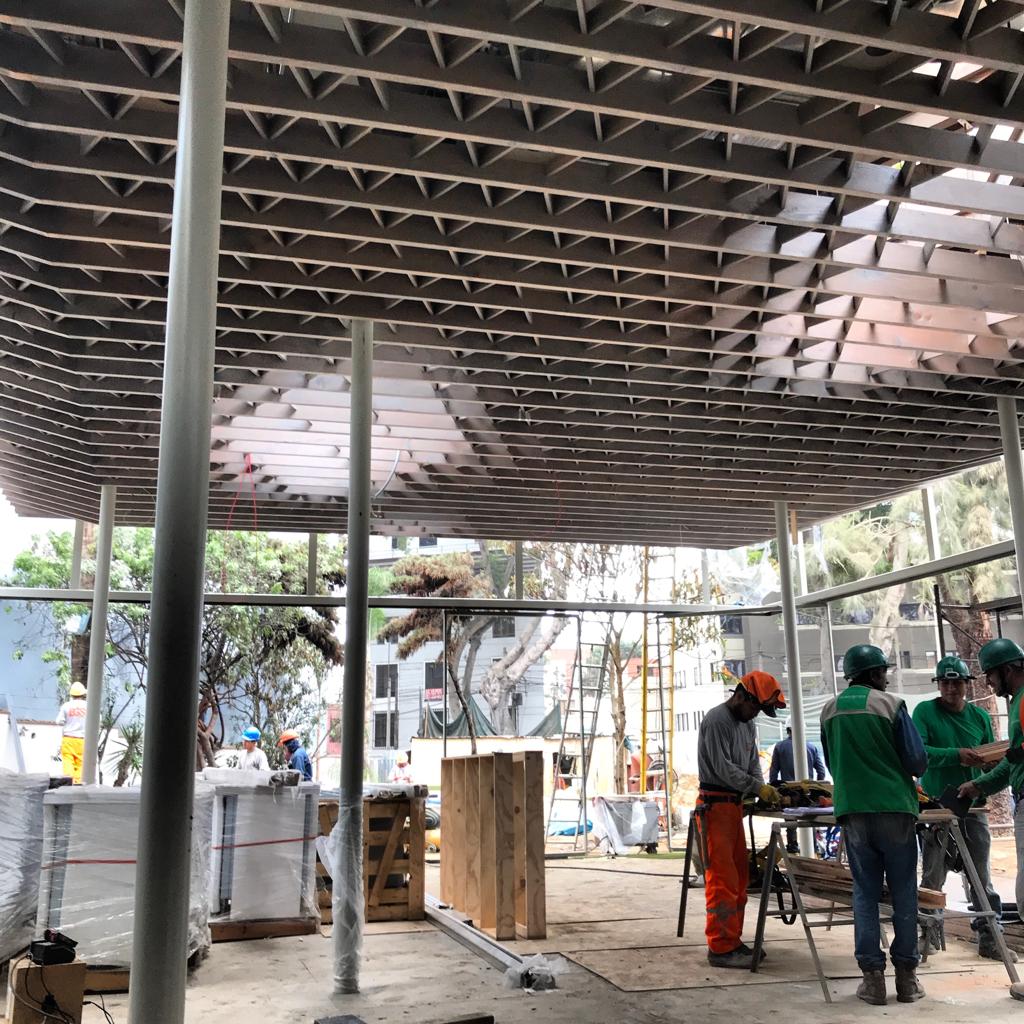
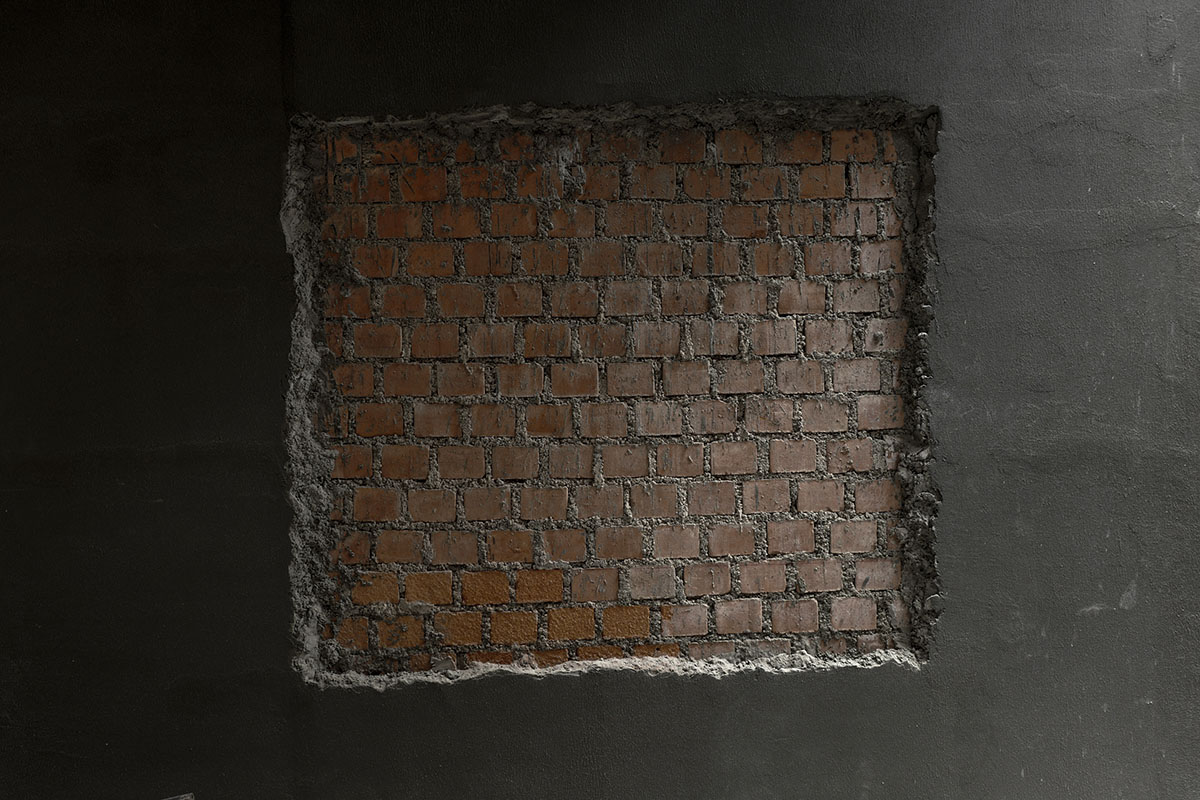
La remodelación de Central consistió en reforzar las viejas estructuras del edificio, dejando en evidencia las distintas intervenciones arquitectónicas a lo largo del tiempo. Central's remodeling consisted in reinforcing the old structures of the building, revealing the different architectural interventions over time.
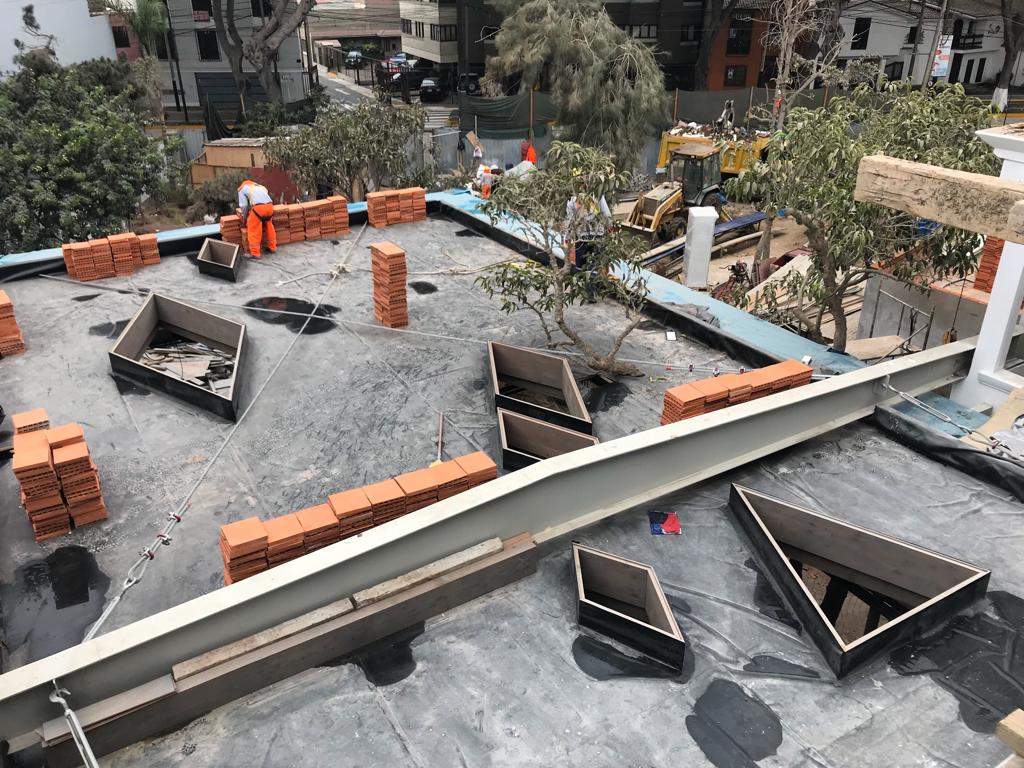
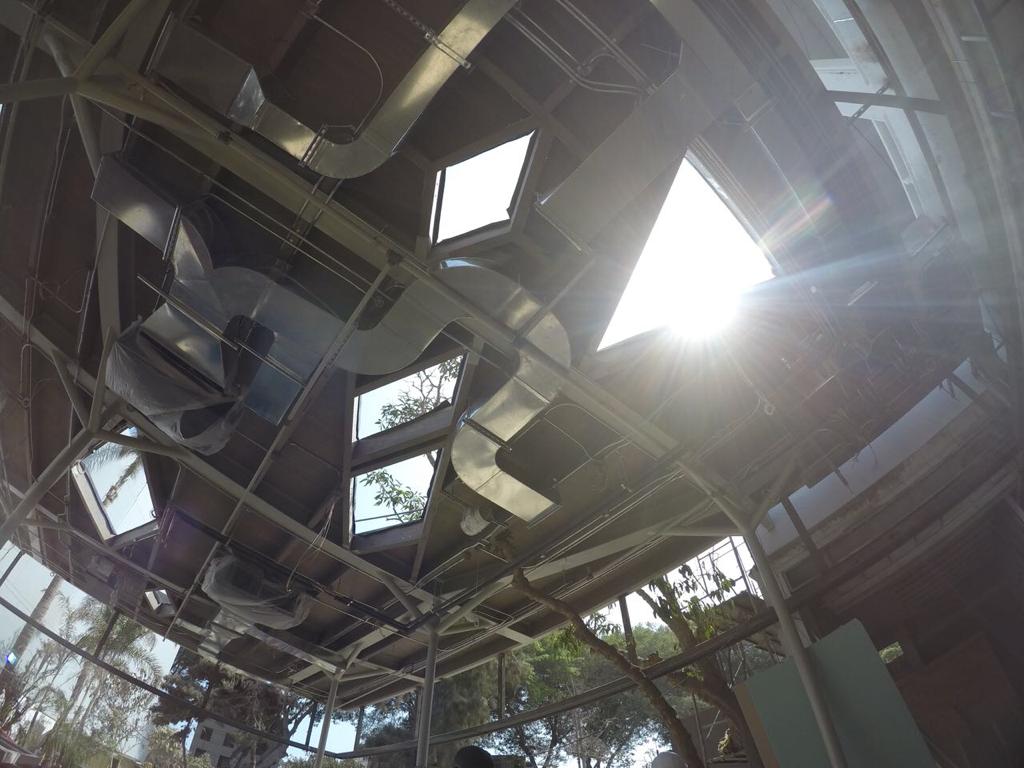
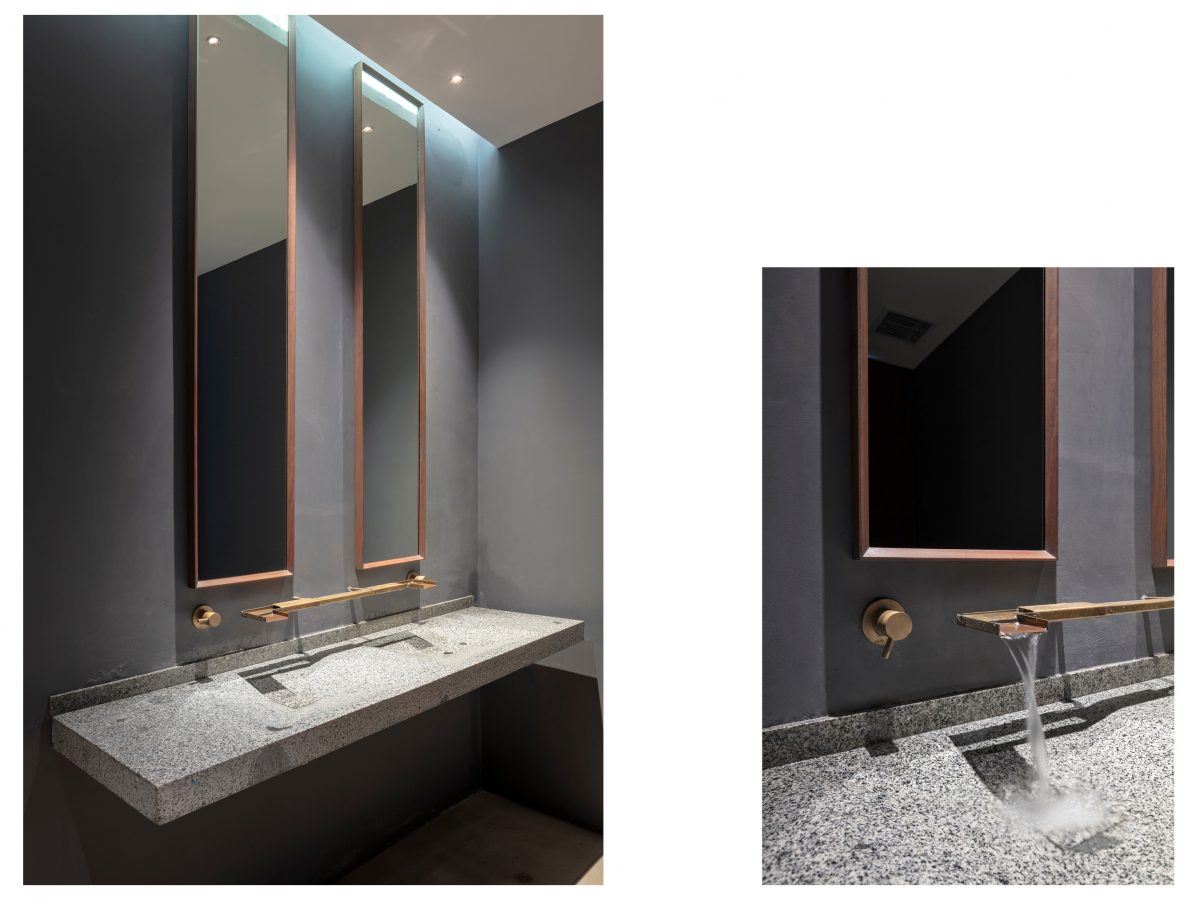
Lavatorio de granito de Huaycán y Quirio. Sink made of granite from Huaycán and Quirio.
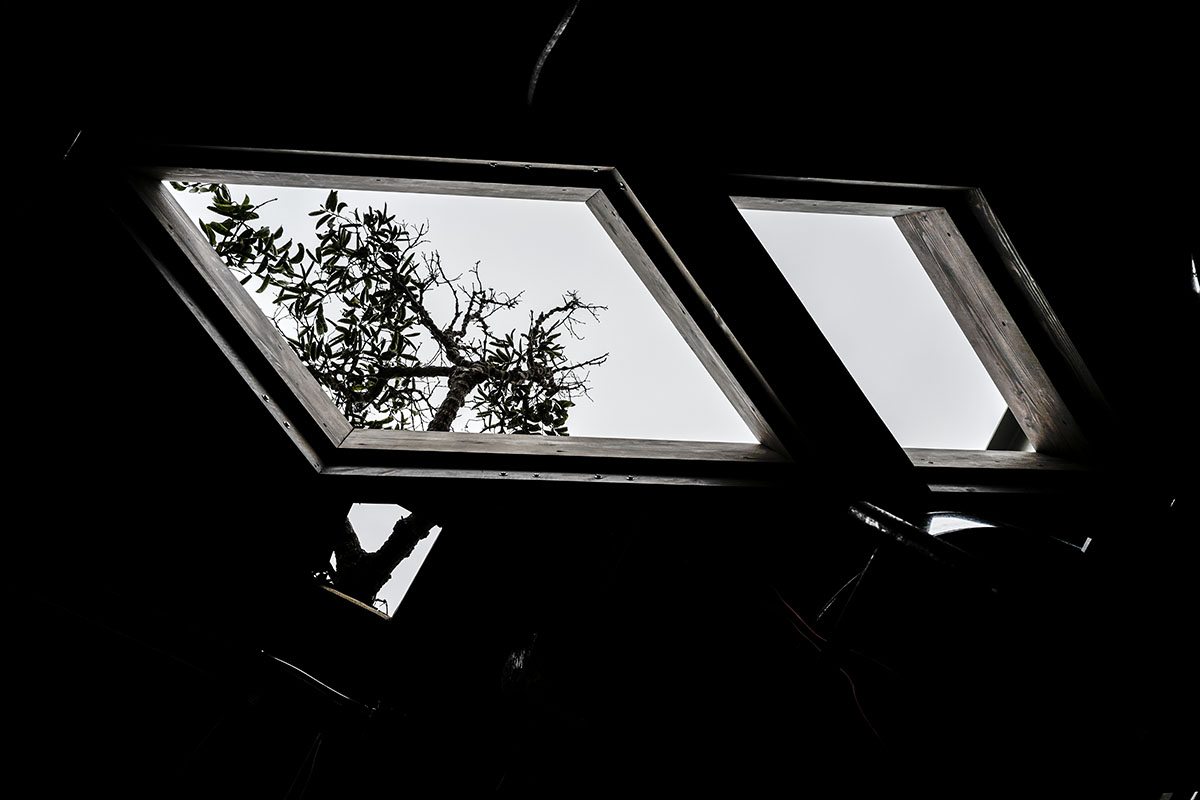
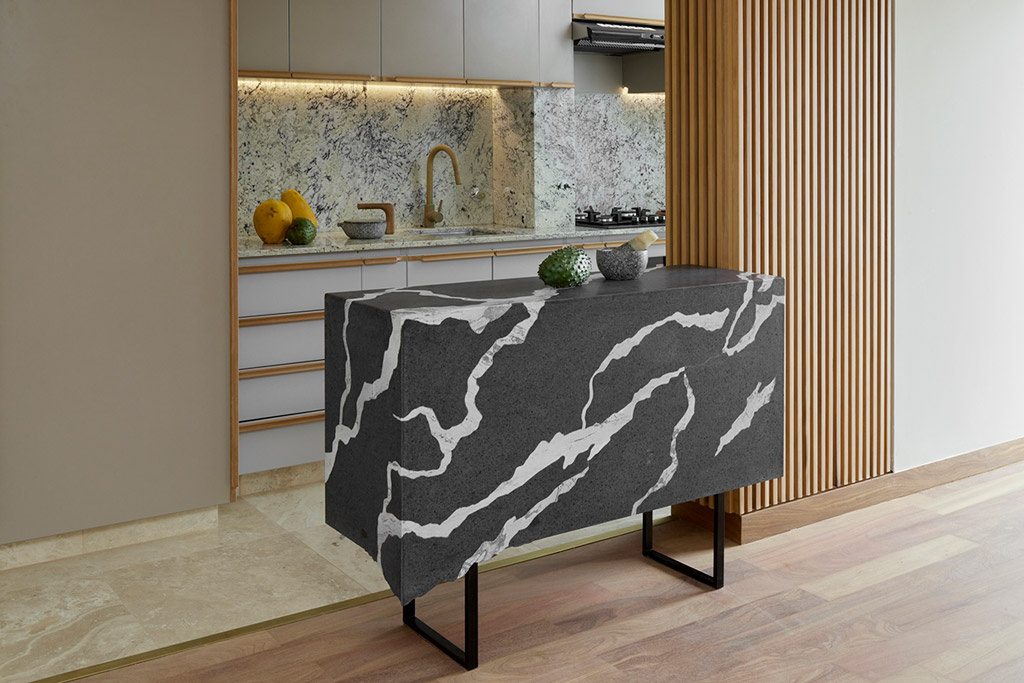
Vista de barra escultórica y cocina. View of sculptural bar and kitchen.
Renovating an apartment in Lima
Design allows us to explore the relationship between the contemporary habitat and natural environments. Estudio RF’s projects are based on the observation of the territory in transformation and establish new relationships between the body, nature and the environment, as a collective fabric.
By incorporating local materials, manual labor and rituals from design, we reincorporate the territory into our lives, integrating the body with materiality and natural cycles. Inhabiting creates the occasion for new and old rituals.
The remodeling of a duplex apartment in Lima allowed the studio to transform interiors with traditional materials and techniques in a context where the city tends towards the generic. Local materials such as Andean stone and jungle wood were used in the design of finishes and furnishings. The warm color palette is complemented by bronze accessories.
ARCHITECTURE AND DESIGN
ESTUDIO RF
PROJECT MANAGEMENT
ARCH MARI RETAMOZO
SUPERVISION
ARCH ANDRES GUZMAN
ASSISTANCE IN DESIGN
ARCH JAVIER RUBIO
CIVIL WORK
INGEGRAMA
STONE MASTER
ROBERTO ROMAN
METAL CARPENTRY
JESUS MUÑOZ
WOOD CARPENTRY
VALERIO COLQUE
WOOD FLOORS AND FINISHINGS
MADERALIA
GLASS CARPENTRY
LUIS BACON
LIGHTING
HILITE
PHOTOGRAPY
JUAN PABLO MURRUGARA
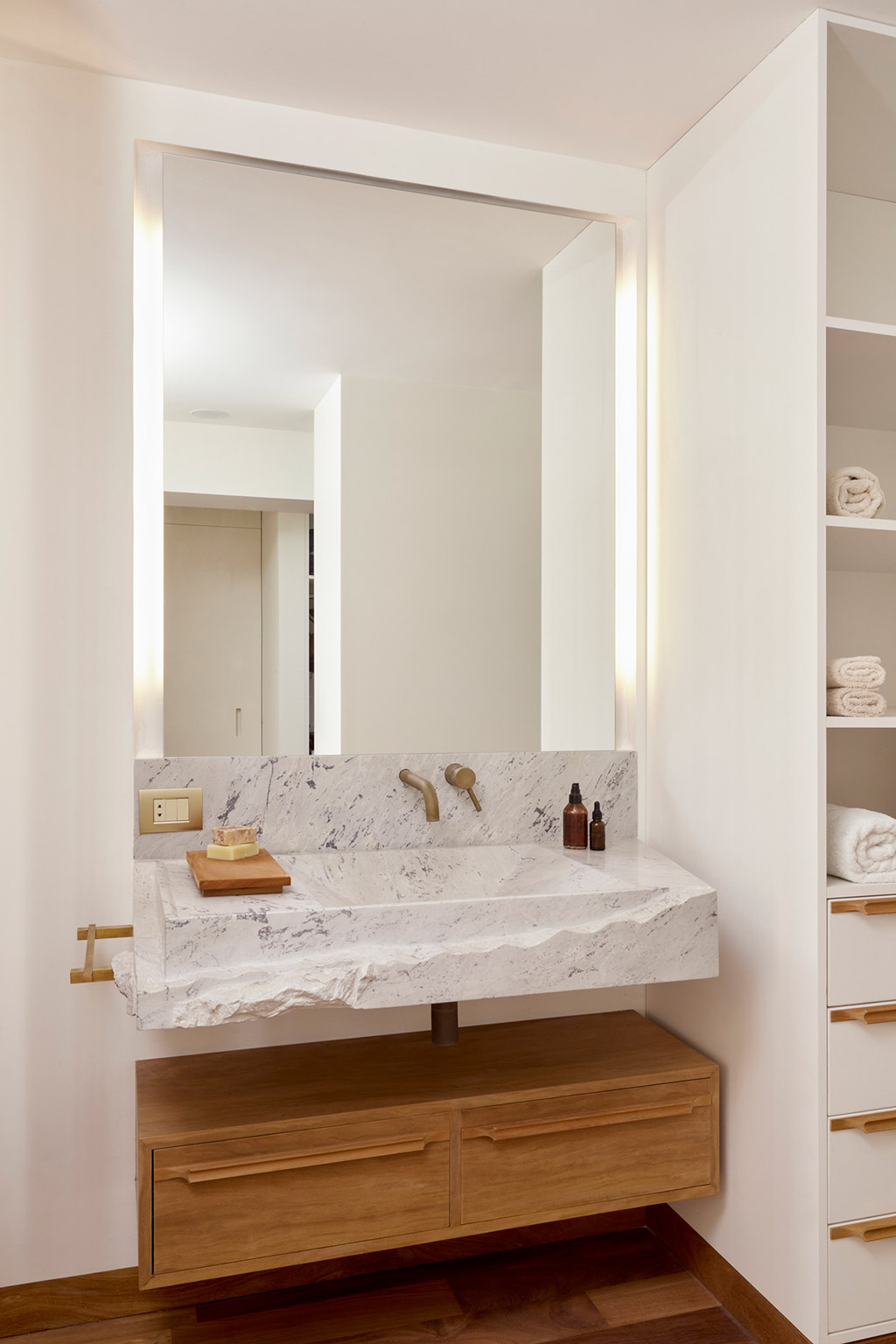
Lavatorio escultórico en mármol fátima y cajonera de madera pumaquiro. Sculptural lavatory in Fátima marble and drawer unit in pumaquiro wood.
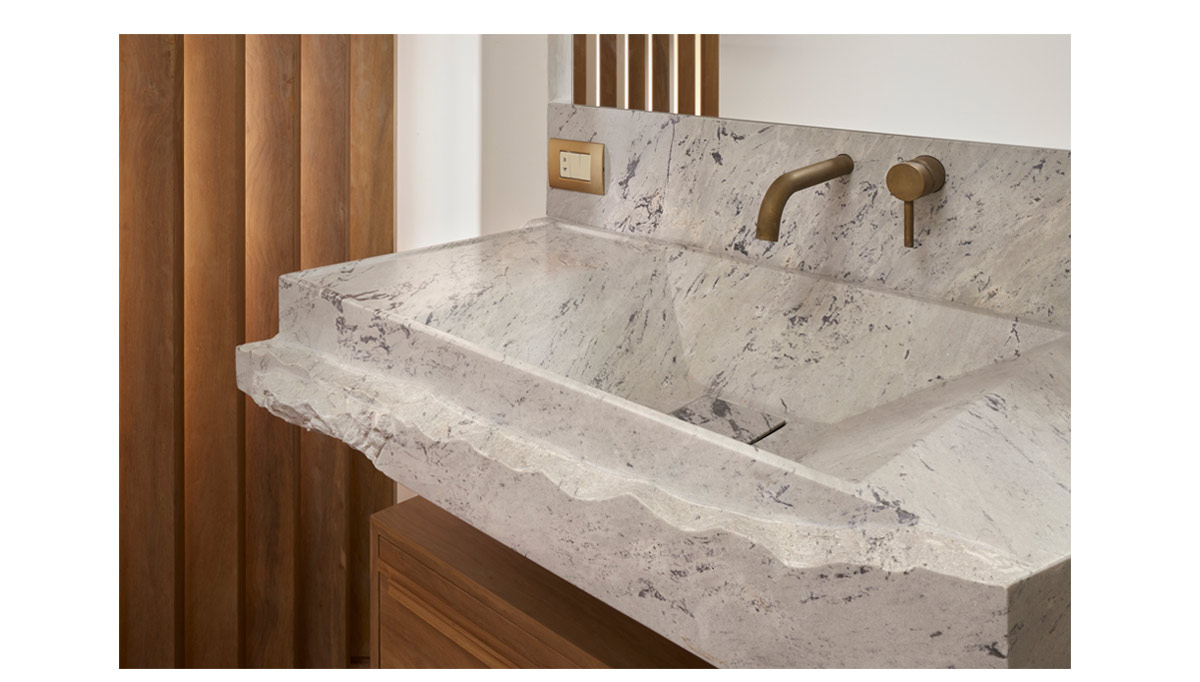
Lavatorio escultórico en mármol ártico. Sculptural washbasin in arctic marble.
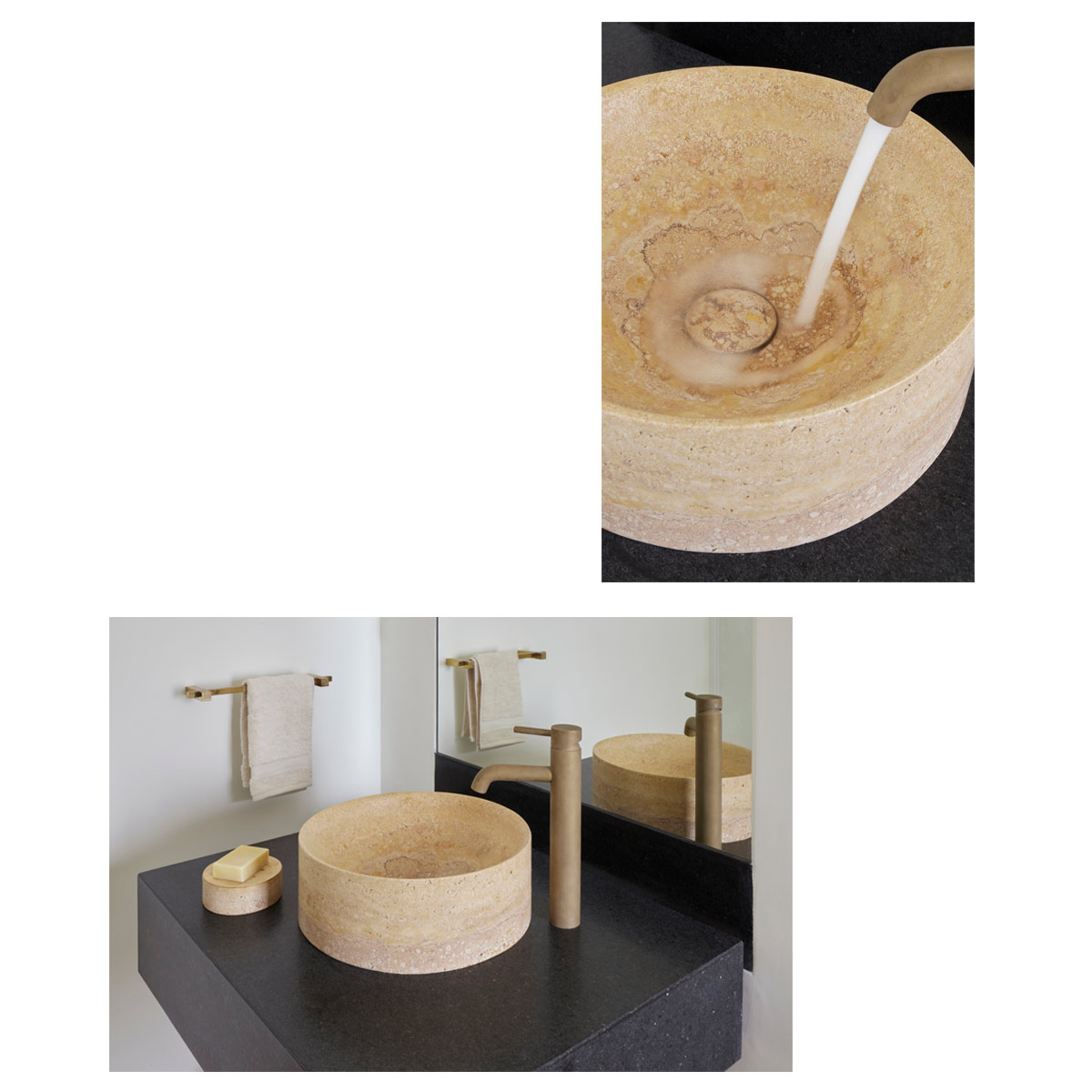
Poza de lavatorio en mármol travertino. Wash basin in travertine marble.
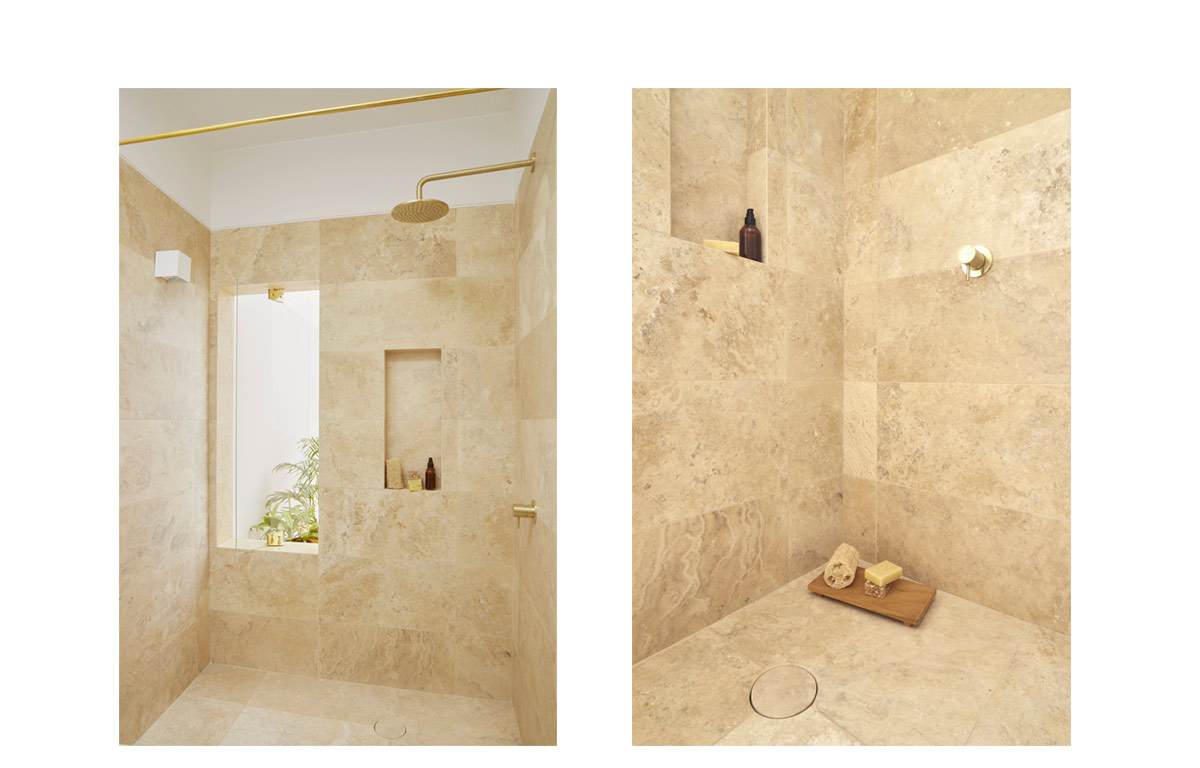
Baño enchapado en mármol travertino. Bathroom veneer in travertine marble.
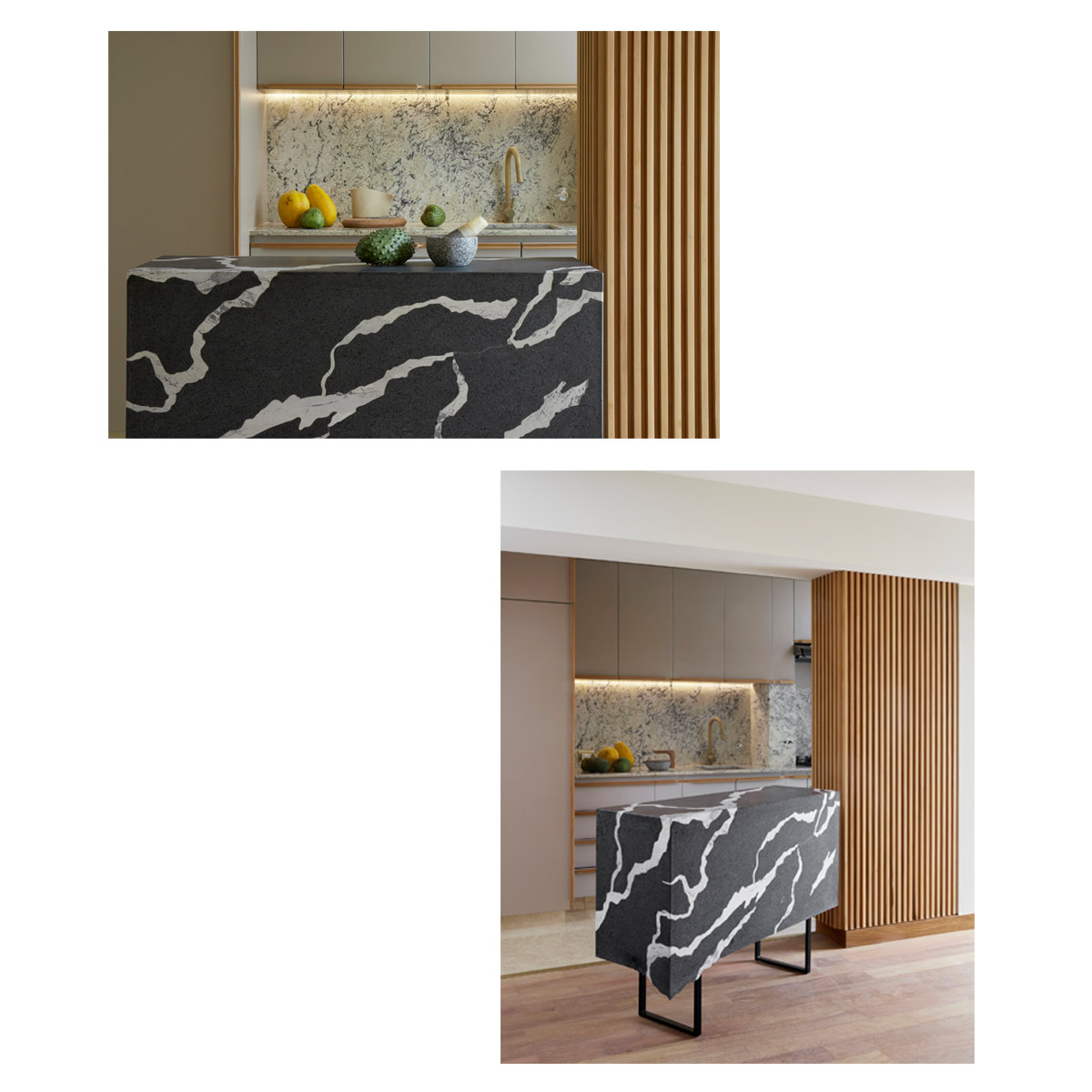
Mueble escultórico de bar en mármol y granito. Sculptural bar cabinet in granite and marble.
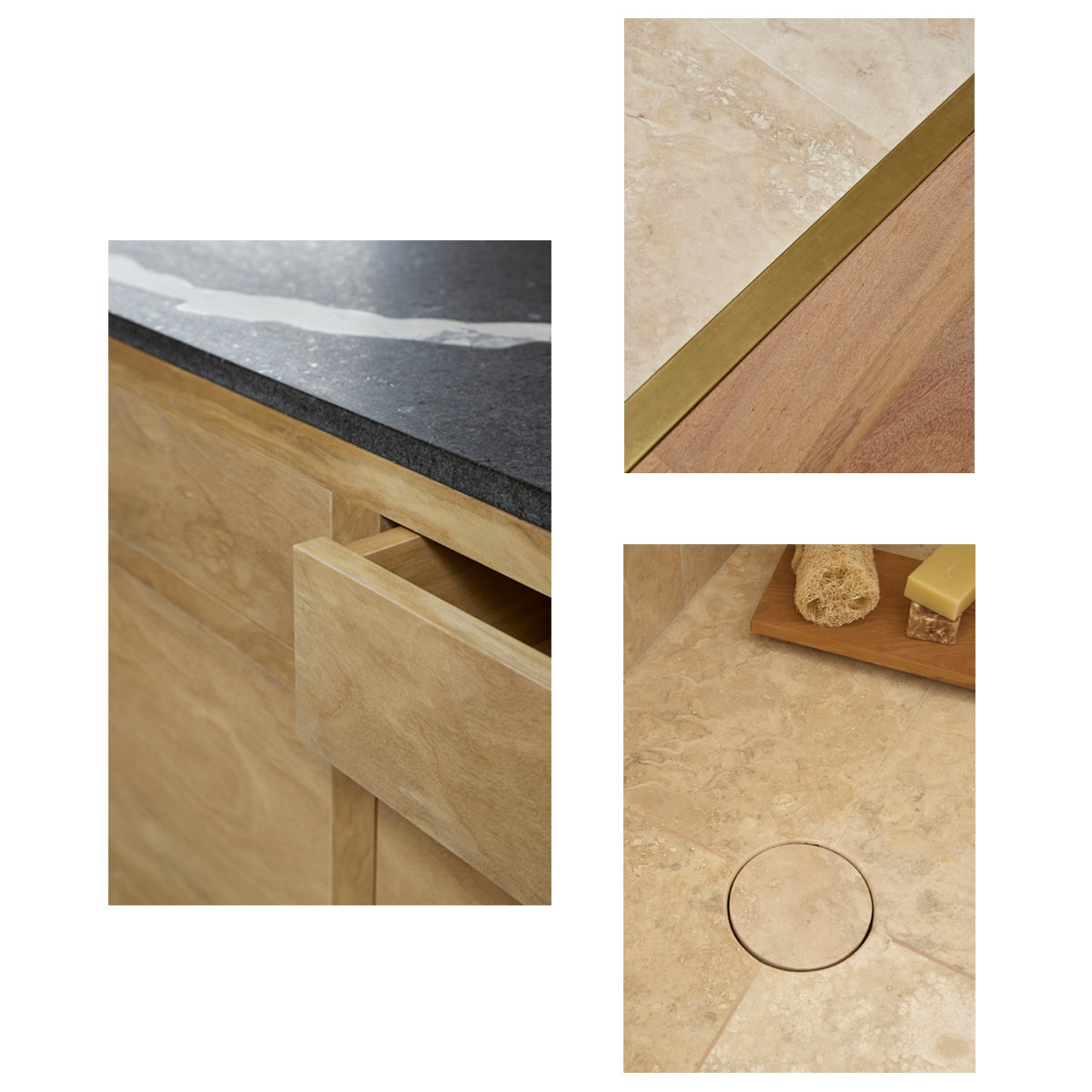
Detalles de acabados en piedra, metal y madera. Finishing details in stone, wood and metal.
